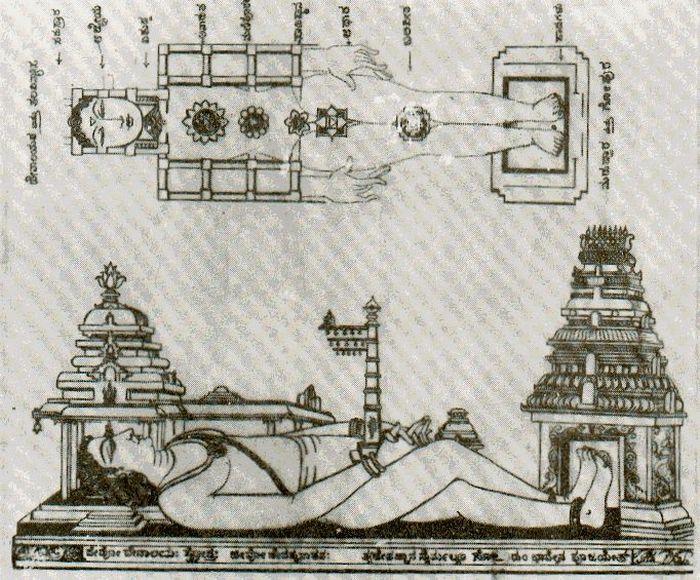KEDARNATH TEMPLE
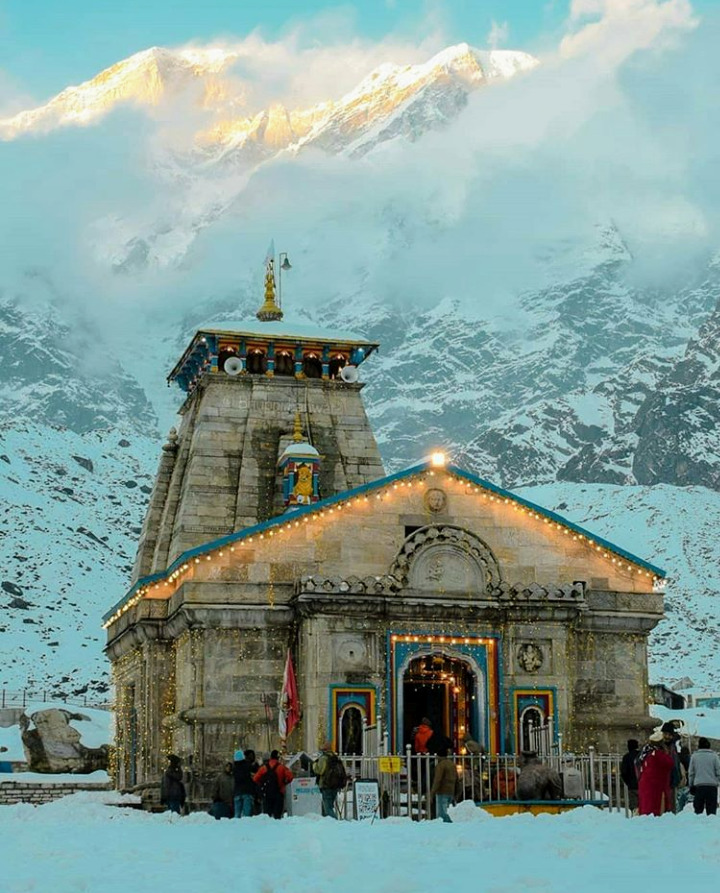
Kedarnath Mandir (Kedarnath Temple) is a Hindu temple (shrine) dedicated to Lord Shiva (Mahadeva). Located on the Garhwal Himalayan range near the Mandakini river, Kedarnath is located in the state of Uttarakhand, India. Due to extreme weather conditions, the temple is open to the general public only between the months of April (Akshaya Tritiya) and November (Kartik Purnima, the autumn full moon). During the winters, the vigraha (deity) from Kedarnath temple is carried down to Ukhimath and where the deity is worshiped for the next six months. Kedarnath is seen as a homogenous form of Lord Shiva, the ‘Lord of Kedarkhand’, the historical name of the region.
Kedarnath, the temple and town, also bore the brunt of nature’s fury, but the shrine survived. Some say a massive boulder blocked the path of the water and saved the temple from being washed away. Miracle or just great architecture, the shrine survives and continues to attract the devout to this day.
The temple is not directly accessible by road and has to be reached by a 22 kilometres (14 mi) uphill trek from Gaurikund. Pony and manchan service is available to reach the structure. According to Hindu legends, the temple was initially built by Pandavas, and is one of the twelve Jyotirlingas, the holiest Hindu shrines of Shiva. It is one of the 275 Paadal Petra Sthalams, expounded in Tevaram. Pandavas were supposed to have pleased Shiva by doing penance in Kedarnath. The temple is one of the four major sites in India’s Chota Char Dham pilgrimage of Northern Himalayas. This temple is the highest among the 12 Jyotirlingas. Kedarnath was the worst affected area during the 2013 flash floods in North India. The temple complex, surrounding areas, and Kedarnath town suffered extensive damage, but the temple structure did not suffer any “major” damage, apart from a few cracks on one side of the four walls which was caused by the flowing debris from the higher mountains. A large rock among the debris acted as a barrier, protecting the temple from the flood. The surrounding premises and other buildings in the market area were heavily damaged.
RAMANATHSWAMY Or RAMESHWARAM TEMPLE
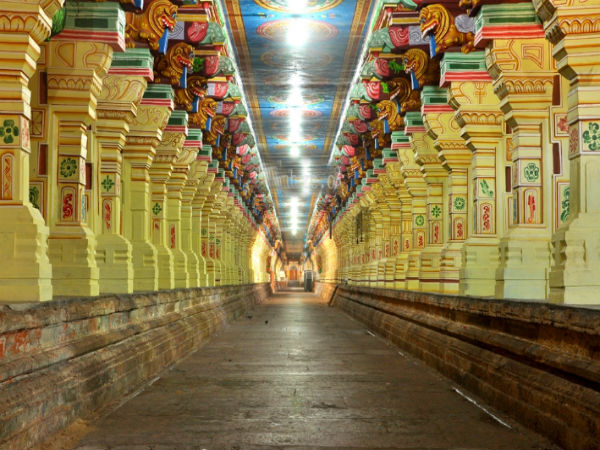
Ramanathaswamy Temple (Irāmanātasvāmi Kōyil) is a Hindu temple dedicated to the god Shiva located on Rameswaram island in the state of Tamil Nadu, India. It is also one of the twelve Jyotirlinga temples. It is one of the 274 Paadal Petra Sthalams, where the three of the most revered Nayanars (Saivite saints), Appar, Sundarar and Tirugnana Sambandar, have glorified the temple with their songs. The temple was expanded during the 12th century by Pandya Dynasty, and its principal shrines sanctum were renovated by Jeyaveera Cinkaiariyan and his successor Gunaveera Cinkaiariyan of the Jaffna kingdom. The temple has the longest corridor among all Hindu temples in India. The temple is located in Rameswaram considered a holy pilgrimage site for Shaivites, Vaishnavites and Smarthas. The presiding deity, the Lingam of Ramanathaswamy (Shiva), is believed to have been established and worshiped by Rama.The primary deity of the temple is Ramanathaswamy (Shiva) in the form of lingam. There are two lingams inside the sanctum – one built by Rama, from sand, residing as the main deity, Ramalingam and the one brought by Hanuman from Kailash called Vishwalingam. Rama instructed that the Vishwalingam should be worshipped first since it was brought by Hanuman – the tradition continues even today.
Like all ancient temples in South India, there is a high compound wall (madil) on all four sides of the temple premises measuring about 865 feet furlong from east to west and one furlong of 657 feet from north to south with huge towers (Gopurams) to the east and the west and finished gate towers to the north and south. The temple has striking long corridors in its interior, running between huge colonnades on platforms above five feet high.
The second corridor is formed by sandstone pillars, beams, and ceiling. The junction of the third corridor on the west and the paved way leading from the western gopuram to the Setumadhava shrine forms a unique structure in the form of a chess board, popularly known as Chokkattan Madapam, where the Utsava deities are adorned and kept during the Vasanthotsavam (Spring festival) and on the 6th day festival in Adi (July–August) and Masi (February–March) conducted by the Setupati of Ramnad.
The outer set of corridors is reputed to be the longest in the world, measuring about 6.9 m in height, 400 feet each in the east and west and about 640 feet in the north and the south. The inner corridors are about 224 feet each in the east and the west and about 352 feet each in the north and the south. Their width varies from 15.5 feet to 17 feet in the east and west about 172 feet on the north and south with width varying 14.5 feet to 17 feet. The total length of these corridors is thus 3850 feet. There are about 1212 pillars in the outer corridor. Their height is about 30 feet from the floor to the center of the roof. The main tower or rajagopuram is 53 m tall. Most pillars are carved with individual compositions. At the beginning, Ramanathaswamy Temple was a thatched shed. The present structure was the work of many individuals spread over a number of centuries. The pride of place in the establishment of the Temple goes to the Setupatis of Ramanathapuram. In the seventeenth century, Dalavai Setupati built a portion of the main eastern Gopuram. In the late eighteenth century, the world-famous third corridor was constructed by Muthuramalinga Setupati who lived for forty-nine years and ruled between 1763 and 1795. The corridor was called “Chokkatan Mandapam”. The Mukhya Pradhani (Chief Minister) was Muthuirullappa Pillai and the Chinna Pradhani (Deputy Chief Minister) was Krishna Iyengar. The Setupati’s statue and those of his two Pradhanis (ministers) can be seen at the western entrance to the third corridor.
BADRINATH TEMPLE
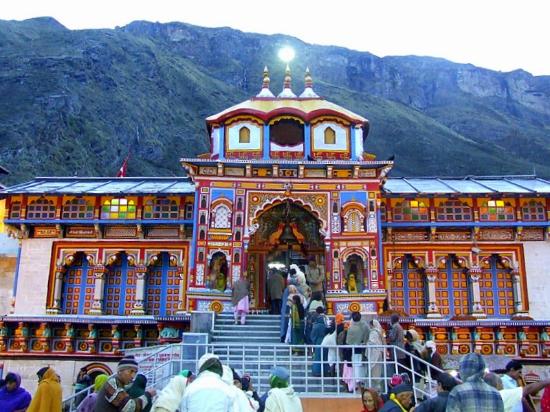
Badrinath or Badrinarayan Temple is a Hindu temple dedicated to Lord Vishnu which is situated in the town of Badrinath in Uttarakhand, India. The temple and town form one of the four Char Dham and Chota Char Dham pilgrimage sites. The temple is also one of the 108 Divya Desams dedicated to Vishnu, who is worshipped as Badrinath—holy shrines for Vaishnavites. It is open for six months every year (between the end of April and the beginning of November), because of extreme weather conditions in the Himalayan region. The temple is located in Garhwal hill tracks in Chamoli district along the banks of Alaknanda River at an elevation of 3,133 m (10,279 ft) above the mean sea level. It is one of the most visited pilgrimage centers of India, having recorded 1,060,000 visits.
The image of the presiding deity worshipped in the temple is a 1 ft (0.30 m), the black stone statue of Vishnu in the form of Badrinarayan. The statue is considered by many Hindus to be one of eight swayam vyakta kshetras, or self-manifested statues of Vishnu.Mata Murti Ka Mela, which commemorates the descent of river Ganges on mother earth, is the most prominent festival celebrated in the Badrinath Temple. Although Badrinath is located in North India, the head priest, or Rawal, is traditionally a Nambudiri Brahmin chosen from the South Indian state of Kerala.
The temple is mentioned in ancient religious texts like Vishnu Purana and Skanda Purana. It is glorified in the Divya Prabandha, an early medieval Tamil canon of the Azhwar saints from the 6th–9th centuries AD.
SOMNATH TEMPLE
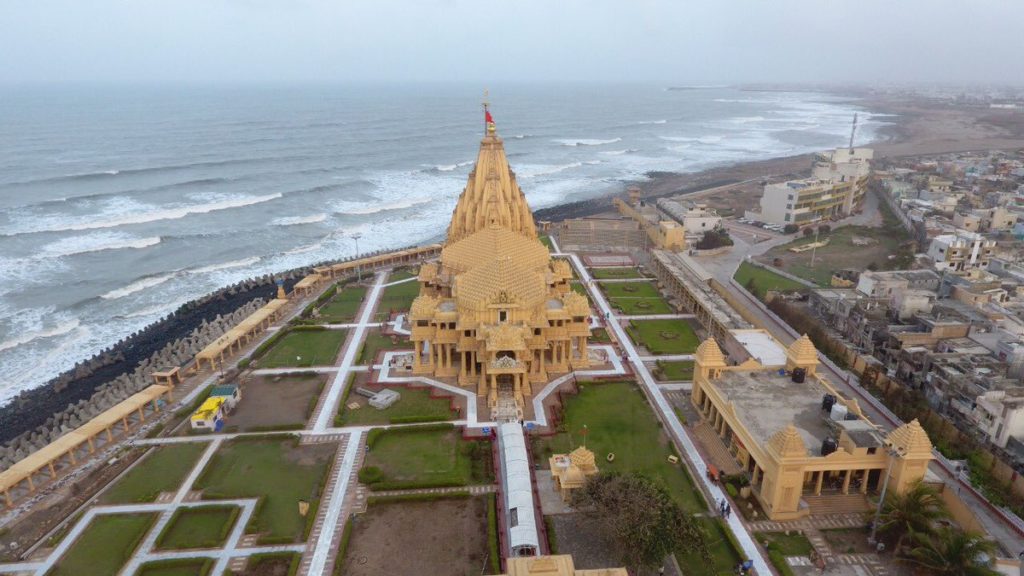
The Somnath temple located in Prabhas Patan near Junagadh in Saurashtra on the western coast of Gujarat, India is believed to be the first among the twelve jyotirlinga shrines of Shiva. It is an important pilgrimage and tourist spot of Gujarat. Reconstructed several times in the past after repeated destruction by several Muslim invaders and rulers, the present temple was reconstructed in Chaulukya style of Hindu temple architecture and completed in May 1951. The reconstruction was started under the orders of the Home Minister of India Vallabhbhai Patel and completed after his death.
The site of Somnath has been a pilgrimage site from ancient times on account of being a triveni sangam (the confluence of three rivers: Kapila, Hiran and the mythical Sarasvati). Soma, the Moon god, is believed to have lost his lustre due to a curse, and he bathed in the Sarasvati River at this site to regain it. The result is the waxing and waning of the moon, no doubt an allusion to the waxing and waning of the tides at this seashore location. The name of the town Prabhas, meaning lustre, as well as the alternative names Someshvar and Somnath (“the lord of the moon” or “the moon god”) arise from this tradition.
According to popular tradition documented by J. Gordon Melton, the first Shiva temple at Somnath is believed to have been built at some unknown time in the past. The second temple is said to have been built at the same site by the “Yadava kings” of Vallabhi around 649 CE. In 725 CE, Al-Junayd, the Arab governor of Sindh is said to have destroyed the second temple as part of his invasions of Gujarat and Rajasthan. The Gurjarat-Pratihara king Nagabhata II is said to have constructed the third temple in 815 CE, a large structure of red sandstone.
VAISHNO DEVI TEMPLE
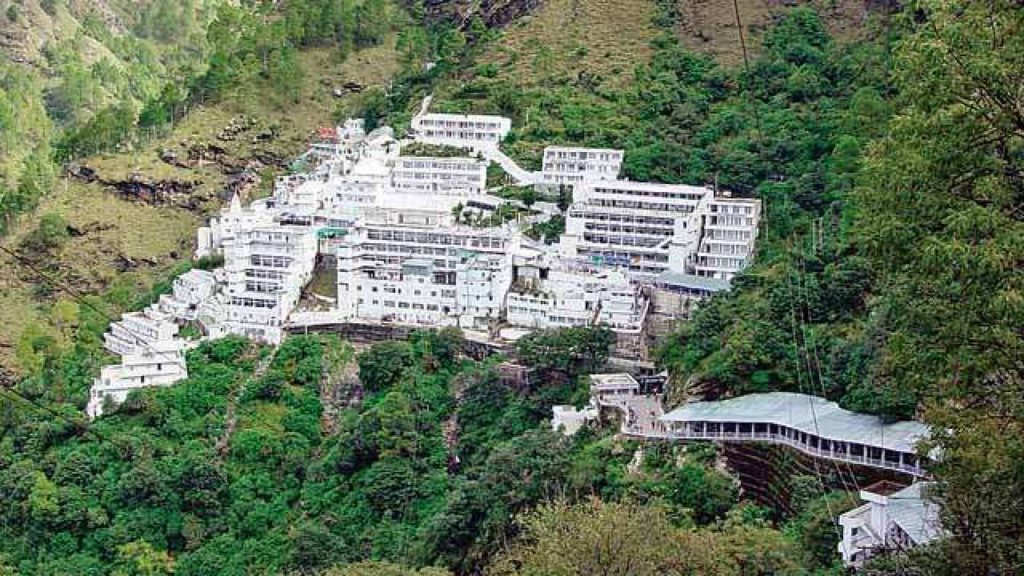
Vaishno Devi, also known as Mata Rani, Trikuta, Ambe and Vaishnavi is the embodiment of The Mother Goddess, Devi. The words “Maa” and “Mata” are commonly used in India for mother, and thus are often heavily used in connection with Vaishno Devi. Goddess Vaishnavi was formed from the combined energies of Goddess Parvati/Mahakali, Mahalakshmi, and Mahasaraswati.Vaishno Devi Mandir is a Hindu temple located in Katra at the Trikuta Mountains within the Indian Union territory of Jammu and Kashmir.
According to Hindu religion, in the Treta Yuga, when the earth was overburdened by the wicked and tyrannical rule of the demons, the Goddess Vaishnavi was created when Gauri, Lakshmi and Saraswati decided to combine their energies to rid the earth of impending doom. From the collective energy of the three Goddesses, appeared an eight armed Goddess, who was riding upon a lion (or tiger). After destroying the demons that were burdening Mother Earth, Goddess Vaishnavi was requested to reside on Earth, so that she may forever keep all evil at bay. She chose to incarnate as a human, named Vaishnavi.
As a child, Vaishnavi was immersed in the devotional service of Lord Vishnu, a habit she carried well into her adulthood. When she was of a marriageable age, she left home to perform intense austerities to please and win Lord Vishnu as her husband. Years passed, and as an answer to her prayers, Lord Vishnu appeared to her in the form of Lord Rama. She learned from him that he was already married and was searching for his wife, Sita, who was abducted by the demon king of Lanka, Ravana.
GOLDEN TEMPLE
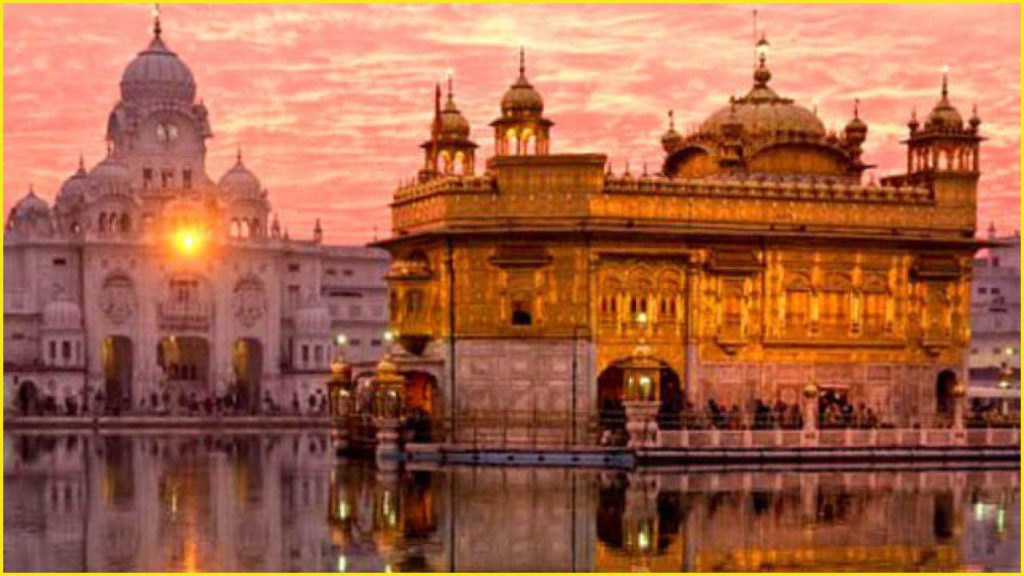
The Darbār Sahib, meaning “exalted court” or Harmandir Sahib, meaning “abode of God”, also known as Golden Temple, is a Gurdwara located in the city of Amritsar, Punjab, India.It is the preeminent spiritual site of Sikhism.
The Gurdwara is built around a man-made pool (sarovar) that was completed by the fourth Sikh Guru, Guru Ram Das in 1577. Guru Arjan, the fifth Guru of Sikhism, requested Sai Mir Mian Mohammed, a Muslim Pir of Lahore, to lay its foundation stone in 1589. In 1604, Guru Arjan placed a copy of the Adi Granth in Harmandir Sahib, calling the site Ath Sath Tirath (lit. “shrine of 68 pilgrimages”). The Gurdwara was repeatedly rebuilt by the Sikhs after it became a target of persecution and was destroyed several times by the Mughal and invading Afghan armies. Maharaja Ranjit Singh after founding the Sikh Empire, rebuilt it in marble and copper in 1809, overlaid the sanctum with gold foil in 1830. This has led to the name the Golden Temple.
The Gurdwara is spiritually the most significant shrine in Sikhism. It became a center of the Singh Sabha Movement between 1883 and 1920s, and the Punjabi Suba movement between 1947 and 1966. In the early 1980s, the Gurdwara became a center of conflict between the Indian government led by Indira Gandhi, some Sikh groups and a faithful movement led by Jarnail Singh Bhindranwale seeking to create a new nation named Khalistan. In 1984, Indira Gandhi sent in the Indian Army as part of Operation Blue Star, leading to deaths of over 1,000 Sikh soldiers and civilians, as well as causing much damage to the Gurdwara and the destruction of Akal Takht. The Gurdwara complex was rebuilt again after the 1984 damage.
The Harmandir Sahib is an open house of worship for all men and women, from all walks of life and faith. It has a square plan with four entrances, has a circumambulation path around the pool. The complex is a collection of buildings around the sanctum and the pool. One of these is Akal Takht, the chief center of religious authority of Sikhism. Additional buildings include a clock tower, the offices of Gurdwara Committee, a Museum and a langar – a free Sikh community run kitchen that serves a simple vegetarian meal to all visitors without discrimination. Over 100,000 people visit the holy shrine daily for worship.The Gurdwara complex has been nominated as a UNESCO World Heritage Site, and its application is pending on the tentative list of UNESCO.
SRI JAGANNATH TEMPLE
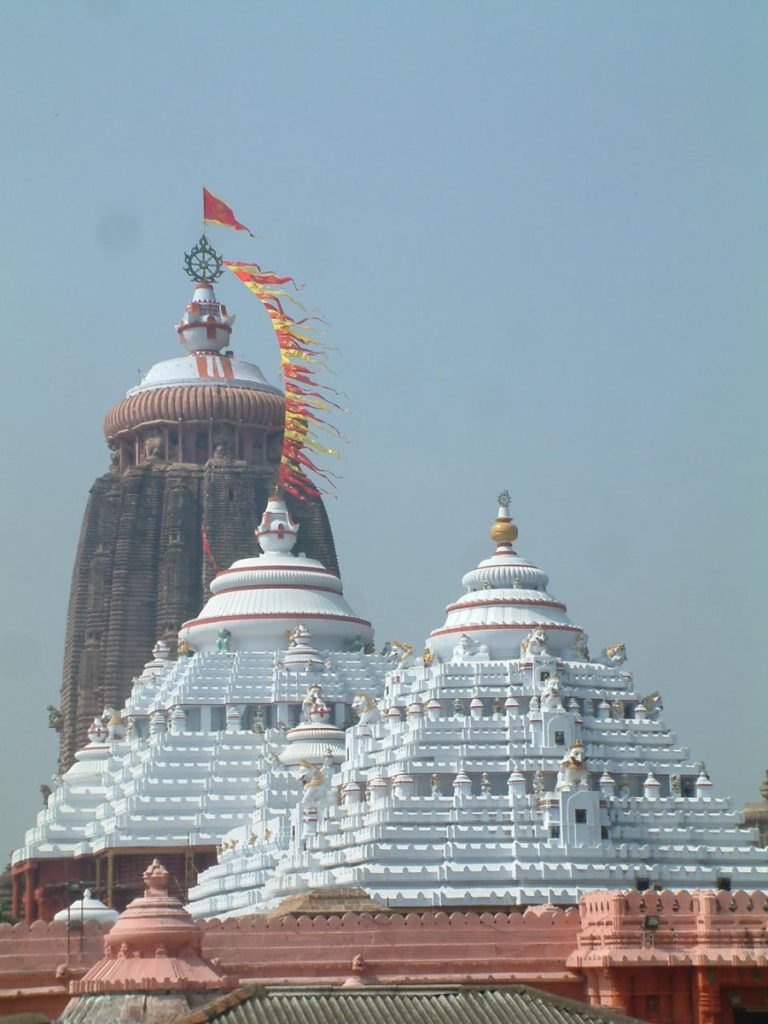
Sri Jagannath Temple is one of the most revered and sacred pilgrimage sites in India. Its main deity is Lord Jagannath, who is said to be an incarnation of Lord Vishnu.
The majestic temple is said to have been built by king Anangabhimadeva, also known as Angangabhima III of the Ganga dynasty. Some historians say the construction of the temple began during the reign of king Chodagangadeva, the founder of the dynasty, in the 12th century. Built on a gigantic raised platform, the magnificent temple soars above all neighbouring buildings and dominates the skyline of Puri. Its 65-m-high spire is visible even from the outskirts of the city. The temple complex is enclosed within two concentric walls, the Kuruma Bheda (inner wall) and the Meghnad Pachira (wall). The main entrance to the temple is through the Singhadwar or the Lion Gate, which is guarded by two imposing stone lions in a crouching position. On the pilasters next to the door are a couple of statues of guards. There are three other gates facing the three of the cardinal directions and are known as the Elephant Gate, the Horse Gate and the Tiger Gate (also called the Khanja Gate). Inside the temple complex, there are 6,000 servitors and kitchens that feed around 10,000 people every day. Every year, the temple celebrates the Ratha Yatra (chariot) festival with great exuberance. It is one of the most widely-attended spiritual extravaganzas in the country.
The temple consists of four structures: Vimana or Bada Deula (sanctum sanctorum), Jagamohan or Mukhasala (the porch), Natamandir (the audience hall) and Bhogamandap (bhoga is the food offering made to gods). While the mysticism of Lord Jagannath may dwarf the architectural marvels of the temple structure, it does have several unique features. It is said the main temple has been constructed in such a way that no shadow of it falls on the ground at any time of the day. There are several other points of interest, like the Nilachakra or the blue wheel perched on top of the temple. Made of eight metals or asta dhatu, devotees believe that sighting the Nilachakra is as good as a sight of the lord Himself. Atop the Nilachakra is the Patitapabana or the flag that is changed every day at sunset. For believers, a sight of the fluttering flag is divine. Devotees also hold the mahaprasada or the offering of food to the lord, in great esteem. A serving of rice, vegetables and cereals, it is cooked in earthen pots on wood and charcoal fire. Also revered is the Aruna stambha or the Sun pillar, the 33-ft-high monolithic pillar of black chlorite in front of the Lion Gate. The capital of the pillar is surmounted by a squatting Garuda (the mythological bird mount of Lord Vishnu).
SRI MEENAKSHI TEMPLE
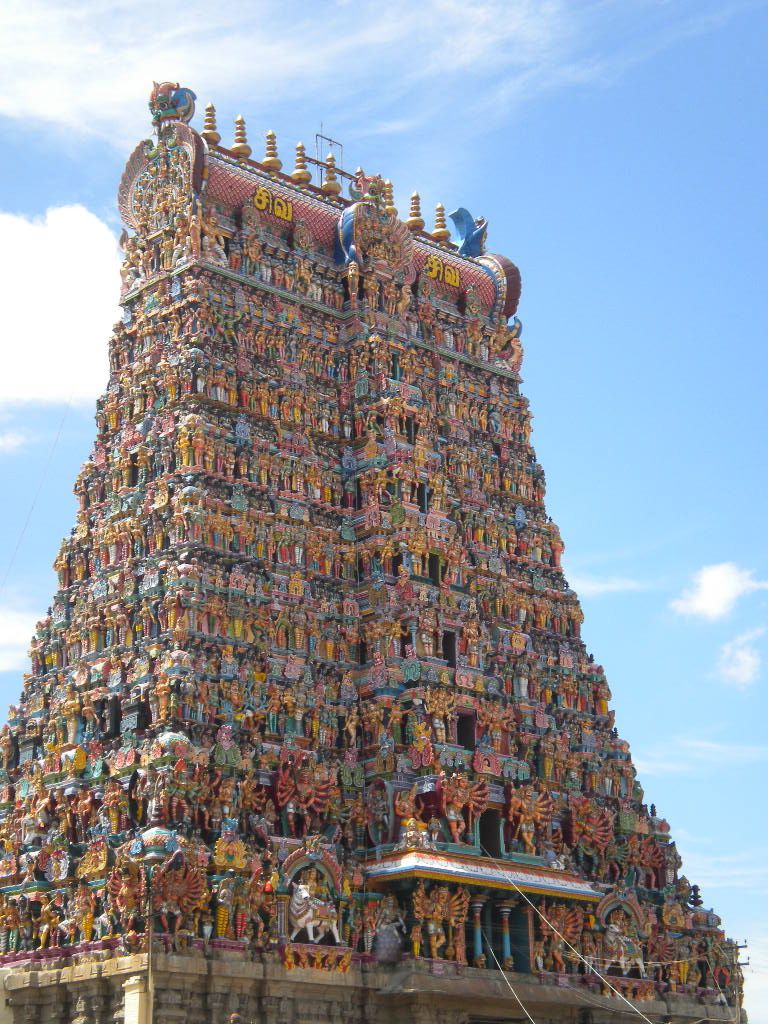
One of the largest temple complexes in India, Sri Meenakshi-Sundareswarar Temple is the most famous spiritual site in Madurai. An excellent example of Dravidian architecture, the temple is sprawled over a huge area, bordered by well-laid gardens and pristine fountains. Two shrines, more than 10 gateways or gopurams, several mandapas (halls) and a giant pool, make up the structure of the temple, which is adorned with beautiful carvings inside and outside. One of the halls of the temple is famous as the “Hall of a 1,000 pillars” though only 985 of them exist today. It is said that whichever direction you view these pillars from, they always seem to be in a straight line. The highlight of the temple is the outermost corridor that comprises musical pillars. These produce different musical notes when tapped. While one of the sanctorums, Sundareswarar, is dedicated to Lord Shiva, the other is devoted to Goddess Meenakshi, his consort.
One of the best parts of the complex is Ashta Sakthi Mandapa, which is a huge structure with an impressive ceiling in a hemisphere shape. Made of exquisite bas-reliefs, the mandapa has been dedicated to the marriage of Lord Somasundara (a form of Lord Shiva) and Goddess Meenakshi. The Meenakshi Nayakkar Mandapam is another attractive feature that is made of 110 stone columns, which are adorned with intricate carvings of an animal with an elephant’s head and a lion’s body. Tourists can also head to the Potramaraukulam or Golden Lotus Tank, which is an ancient waterfront where devotees take a holy bath. The tank is surrounded by corridors called Chitra Mandapas, which boast sculptures featuring the divine sports of the god.
The temple lights up every year during the months of April and May when its most important festival- the Meenakshi Thirukalyanam or the divine marriage of Goddess Meenakshi is celebrated with great fervour.
SRI AMARNATH CAVE TEMPLE
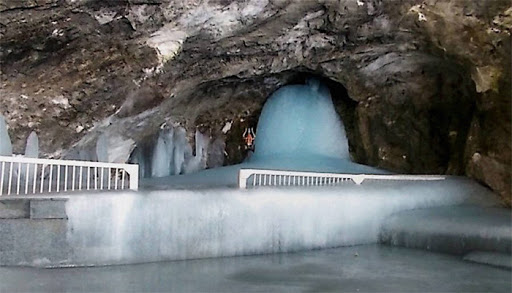
Amarnath Cave, dedicated to Lord Shiva, is considered to be a sacred place by the Hindus as it believed to be the earthly abode of the Lord. Perched at a height of 3,888 m, the cave houses four or five ice formations resembling the figures of various gods. As tradition goes, the largest one is worshipped as Amarnath or Lord Shiva, the one on the left side of it as Lord Ganesha, and the one on the right as Goddess Parvati. Inside the Amarnath cave is another small cave to the left, where vibhuti or holy ash is distributed among pilgrims. Thousands of devotees traverse the mountains to visit this holy shrine during the months of June and August. This journey is popularly referred to as Amarnath Yatra and commences from Chandanwadi, passes via Pissu, Sheshnag and Panjtarni and concludes at Amarnath Cave.
Legend has it that Lord Shiva wanted to reveal the secret of the creation of the world and immortality to Goddess Parvati, and he chose the cave for the location. He entered the cave after removing all his ornaments but a pigeon’s egg fell on his head. It is said that it became immortal and a pair of pigeons can still be seen in the cave. The cave is about 45 m high, 27 m long, and faces the south.
SRI VENKATESWARA TEMPLE
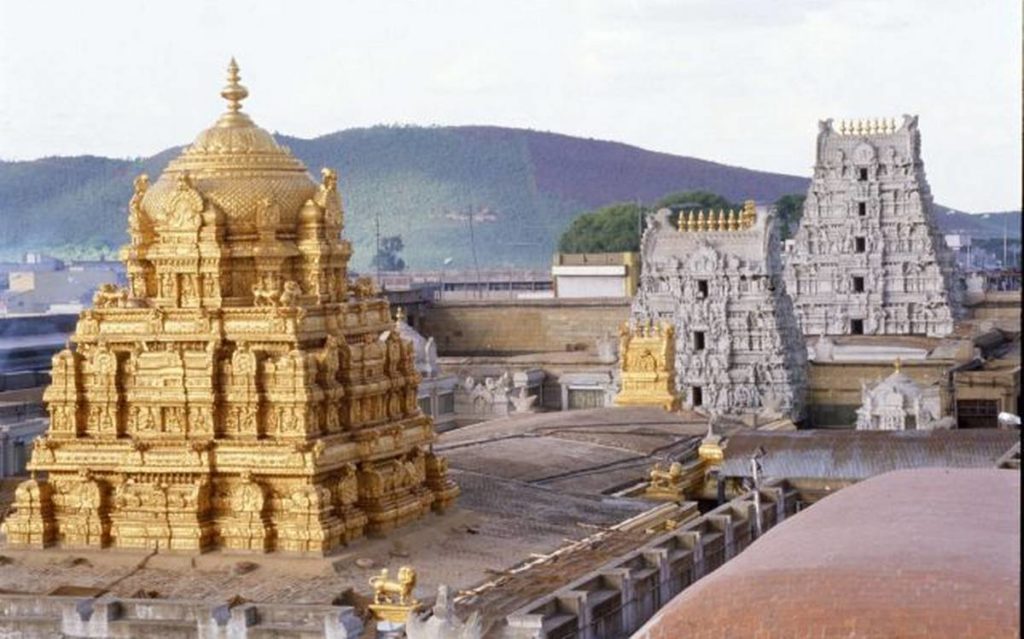
Venkateswara Temple is a Hindu temple situated in the hill town of Tirumala at Tirupati in Chittoor district of Andhra Pradesh, India. The Temple is dedicated to Venkateswara, a form of Vishnu, who is believed to have appeared here to save mankind from trials and troubles of Kali Yuga. Hence the place has also got the name Kaliyuga Vaikuntham and the Lord here is referred to as Kaliyuga Prathyaksha Daivam. The temple is also known by other names like Tirumala Temple, Tirupati Temple, Tirupati Balaji Temple. Venkateswara is known by many other names: Balaji, Govinda, and Srinivasa he Temple is constructed in Dravidian architecture and is believed to be constructed over a period of time starting from 300 AD. The Garbagruha (Sanctum Sanctorum) is called AnandaNilayam. The presiding deity, Venkateswara, is in standing posture and faces east in Garbha gruha. The temple follows Vaikhanasa Agama tradition of worship. The temple is one of the eight Vishnu Swayambhu Kshetras and is listed as 106th and the last earthly Divya Desam. The Temple premises had two modern Queue complex buildings to organise the pilgrim rush, Tarigonda Vengamamba Annaprasadam complex for free meals to Pilgrims, hair tonsure buildings and a number of pilgrim lodging sites.
It is the richest temple in the world in terms of donations received and wealth. The temple is visited by about 50,000 to 100,000 pilgrims daily (30 to 40 million people annually on average), while on special occasions and festivals, like the annual Brahmotsavam, the number of pilgrims shoots up to 500,000, making it the most-visited holy place in the world.. In 2016, it was reported that 27.3 million pilgrims visited the temple.
KASHI VISHWANATH TEMPLE
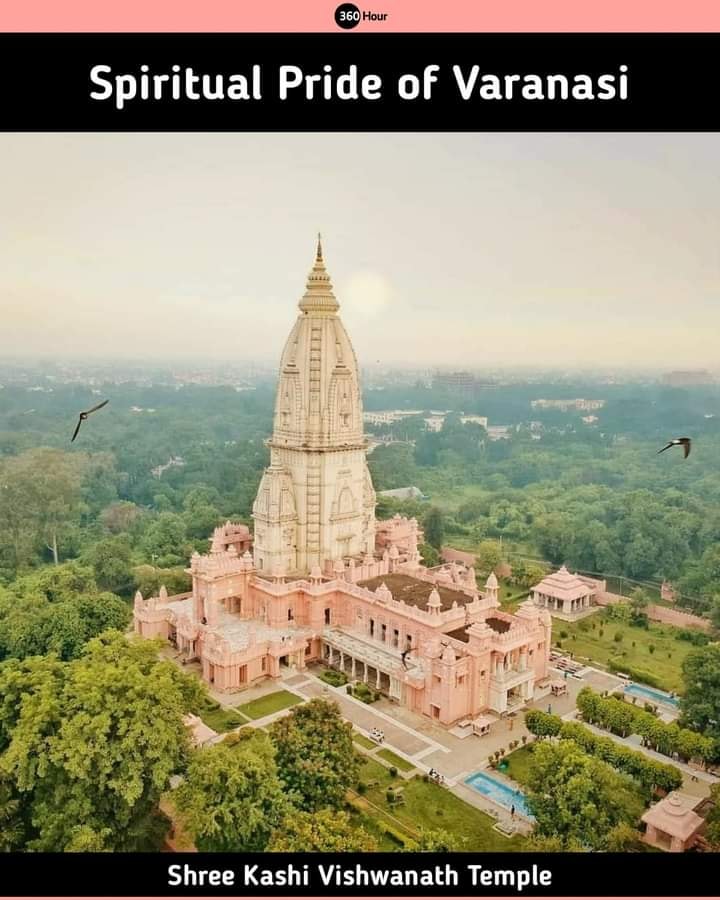
Kashi Vishwanath Temple is one of the most famous Hindu temples dedicated to Lord Shiva. It is located in Varanasi, Uttar Pradesh, India. The Temple stands on the western bank of the holy river Ganga, and is one of the twelve Jyotirlingas, the holiest of Shiva Temples. The main deity is known by the names Shri Vishwanath and Vishweshwara (IAST: Vishveshvara) literally meaning Lord of the Universe. Varanasi city is also called Kashi in ancient time, and hence the Temple is popularly called as Kashi Vishwanath Temple. The etymology of the name Vishveshvara is Vishva: Universe, Ishvara: lord, one who has dominion.
The Temple has been referred to in Hindu scriptures for a very long time as a central part of worship in the Shaiva Philosophy. It has been destroyed and re-constructed a number of times in history. The last structure was demolished by Aurangzeb, the sixth Mughal emperor who constructed the Gyanvapi Mosque on its site. The current structure was built on an adjacent site by the Maratha ruler, Ahilya Bai Holkar of Indore in 1780. Maharaja Ranjit Singh, First Sikh Maharaja, donated 1 ton Gold for flaming Temple’s Dome.
DILWARA TEMPLE
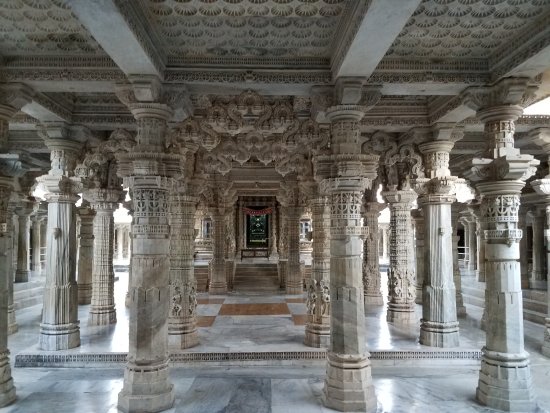
The Dilwara Temples or Delvada Temples are a group of svetambara Jain temples located about 2 1⁄2 kilometres from the Mount Abu settlement, Rajasthan‘s only hill station. The earliest were built by Vimal Shah and supposedly designed or at least financed by Vastupala, Jain minister of Dholka. They date between the 11th and 16th centuries, forming some of the most famous monuments in the style of Māru-Gurjara architecture, famous for their use of a very pure white marble and intricate marble carvings. They are a pilgrimage place for Jains, and a significant general tourist attraction. Although Jains built many temples at other places in Rajasthan, the Dilwara temples are believed to be the most impressive.
The five Dilwara Temples are among the most famous Jain temples. The Vimal Vasahi is much the earliest, constructed by 1031, with the Luna Vasahi by 1230, and the others at intervals between 1459 and 1582. All are in a very white marble that adds greatly to their effect, and remain in use. The oldest and largest two have large amounts of intricate carving even by the standards of the style
MALLIKARJUN SWAMY TEMPLE
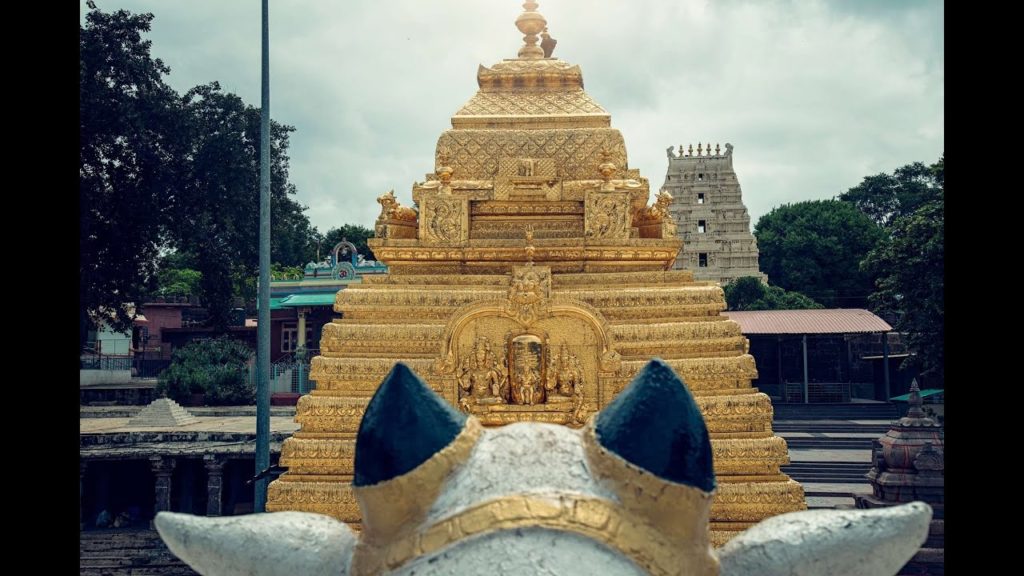
Located in a picturesque environment of Nallamalai Hills, ‘Srisailam’ the abode of Siva and Sakthi is on the right side of the river Krishna in Kurnool district of Andhra Pradesh. It is at an altitude of 476 meters above the sea level, at Latitude of 16 12” North and Longitude of 78 5” East.The presiding Deities of this Kshetram God Mallikarjuna Swamy is one of the twelve Jyothirlingas and Goddess Bhramaramba Devi is one of the eighteen Mahasakthis and both are believed to be self-manifested. The unique feature of this Kshetram is the co-existing of Jyothirlingam and Mahasakthi in one Temple complex, which is the rare and only of its kind.
At this place the river Krishna flows through a deep narrow valley, approximately 100 meters wide and nearly at a depth of 1000 meters from the hill top. The river flows at a distance of 70 Km to the up of Srisailam and continues to flow in the same valley for a further distance of 80 Km to the down till it reaches Nagarjunasagar. The narrow flow of the river at such deep valley is fine looking and more pleasant near Srisailam where it is called as Pathalaganaga. Actually the river takes two repeated bends at Pathalaganga with in a short distance and makes a large stretch of high Plateau in each bend. The right part of it we have Srisailam and whereas on the left there is ruined Chandraguptanagara which is mentioned in the Skandapurana and also some of the celebrated Literary works of 12th to 16th centuries.
In the traditional Hindu mythology, this Kshetram is identified as the Kailasa on the earth and named as ILA – KAILASAM. Besides its mythical antiquity, Srisailam is also having a hoary historical antiquity. Starting from the Satavahanas who were the earliest rulers of Andhradesa, the region around Srisailam appears as a prominent religious centre and it continues to be so into the present times. The inscriptional evidences available at Srisailam are of the 12th century A.D and afterwards, which is very intriguing. However, the inscriptions belonging to various early historical places found in various parts of the Deccan and Andhra Pradesh, testify to its historical antiquity starting from first century A.D. In this small book the temple complex of Srisailam is analysed from the view point of chronology, art and architecture, sculpture and iconography.
KANDARIYA MAHADEVTEMPLE
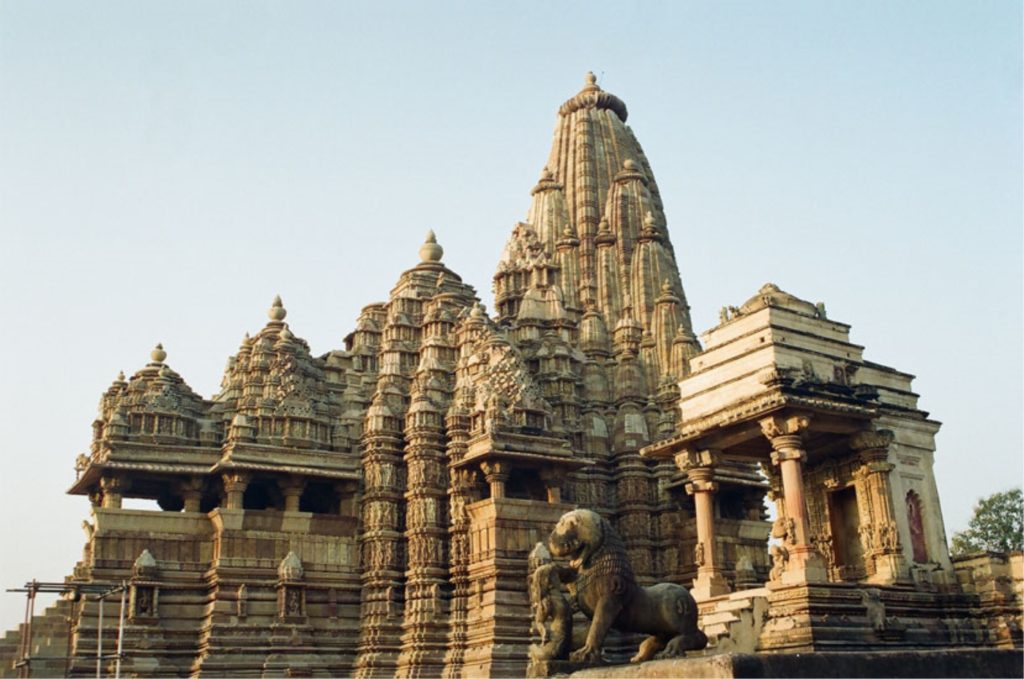
Kaṇḍāriyā Mahādeva Temple is located in the Chhatarpur district of Madhya Pradesh in Central India. It is in the Khajuraho village, and the temple complex is spread over an area of 6 square kilometres (2.3 sq mi) It is in the western part of the village to the west of the Vishnu temple.The temple complex, in the Khajuraho village at an elevation of 282 metres (925 ft), is well connected by road, rail and air services. Khajuraho is 55 kilometres (34 mi) to the south of Mahoba, 47 kilometres (29 mi) away from the Chhatarpur city to its east, 43 kilometres (27 mi) away from Panna, 175 kilometres (109 mi) by road away from Jhansi on the north, and 600 kilometres (370 mi) to the south – east of Delhi. It is 9 kilometres (5.6 mi) from the railway station. Khajuraho is served by Khajuraho Airport (IATA Code: HJR), with services to Delhi, Agra and Mumbai. It is 6 kilometres (3.7 mi) from the temple.
BRIHADISHWARA TEMPLE
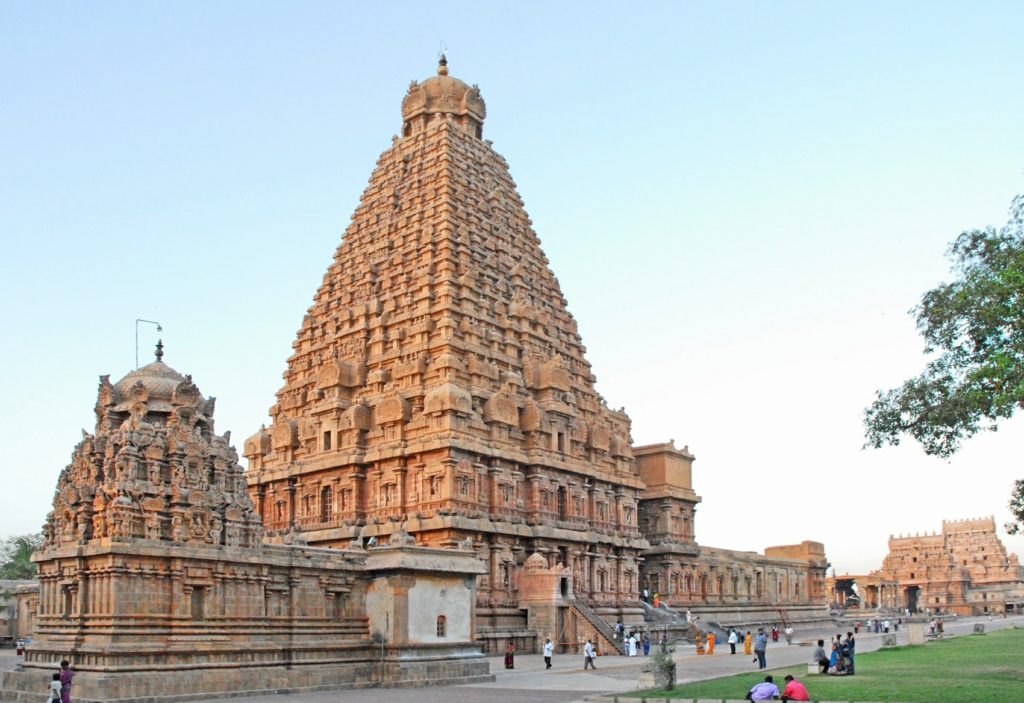
Brihadishvara Temple, also called Rajarajesvaram or Peruvudaiyār Kōvil, is a Hindu temple dedicated to Shiva located in South bank of Kaveri river in Thanjavur, Tamil Nadu, India. It is one of the largest South Indian temples and an exemplary example of a fully realized Dravidian architecture. It is called as Dhakshina Meru (Meru of south). Built by Tamil king Raja Raja Chola I between 1003 and 1010 AD, the temple is a part of the UNESCO World Heritage Site known as the “Great Living Chola Temples”, along with the Chola dynasty era Gangaikonda Cholapuram temple and Airavatesvara temple that are about 70 kilometres (43 mi) and 40 kilometres (25 mi) to its northeast respectively.The original monuments of this 11th century temple were built around a moat. It included gopura, the main temple, its massive tower, inscriptions, frescoes and sculptures predominantly related to Shaivism, but also of Vaishnavism and Shaktism traditions of Hinduism. The temple was damaged in its history and some artwork is now missing. Additional mandapam and monuments were added in centuries that followed. The temple now stands amidst fortified walls that were added after the 16th century
The Brihadeswara Temple is located in the city of Thanjavur, about 350 kilometres (220 mi) southwest of Chennai. The city is connected daily to other major cities by the network of Indian Railways, Tamil Nadu bus services and the National Highways 67, 45C, 226 and 226 Extn.The nearest airport with regular services is Tiruchirappalli International Airport (IATA: TRZ), about 55 kilometres (34 mi) away
SREE PADMANABHASWAMY TEMPLE
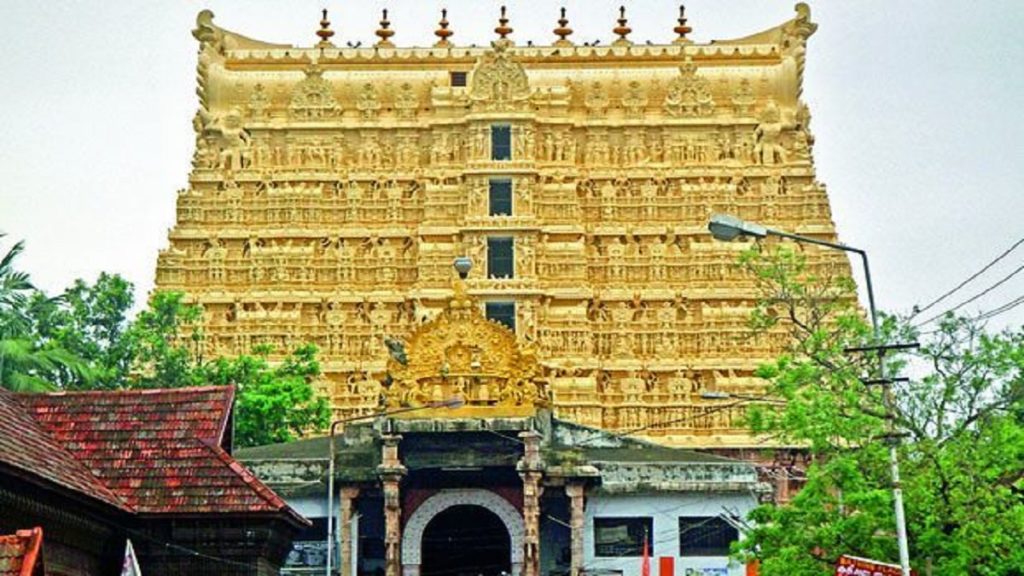
The Padmanabhaswamy temple is a Hindu temple located in Thiruvananthapuram, the state capital of Kerala, India. The name of the city of Thiruvananthapuram in Malayalam translates to “The City of Lord Ananta”,referring to the deity of the Padmanabhaswamy temple. The temple is built in an intricate fusion of the Chera style and the Dravidian style of architecture, featuring high walls, and a 16th-century gopura. While the Ananthapura temple in Kumbla is considered the original seat of the deity (“Moolasthanam”), architecturally to some extent, the temple is a replica of the Adikesava Perumal temple in Thiruvattar.
The principal deity Padmanabhaswamy (Vishnu) is enshrined in the “Anantha Shayana” posture, the eternal yogic sleep on the serpent Adi Shesha. Padmanabhaswamy is the tutelary deity of the royal family of Travancore. The titular Maharaja of Travancore, Moolam Thirunal Rama Varma, is the trustee of the temple.
The temple is one of the 108 principal Divya Desams (“Holy Abodes”) in Vaishnavism, and is glorified in the Divya Prabandha. The Divya Prabandha glorifies this shrine as being among the 13 Divya Desam in Malai Nadu (corresponding to present-day Kerala with Kanyakumari District). The 8th century Tamil poet Alvar Nammalvar sang the glories of Padmanabha. The Ananthapuram temple in Kasaragod is believed to be the original seat of Padmanabhaswamy (“Moolasthanam”)
SHORE TEMPLE
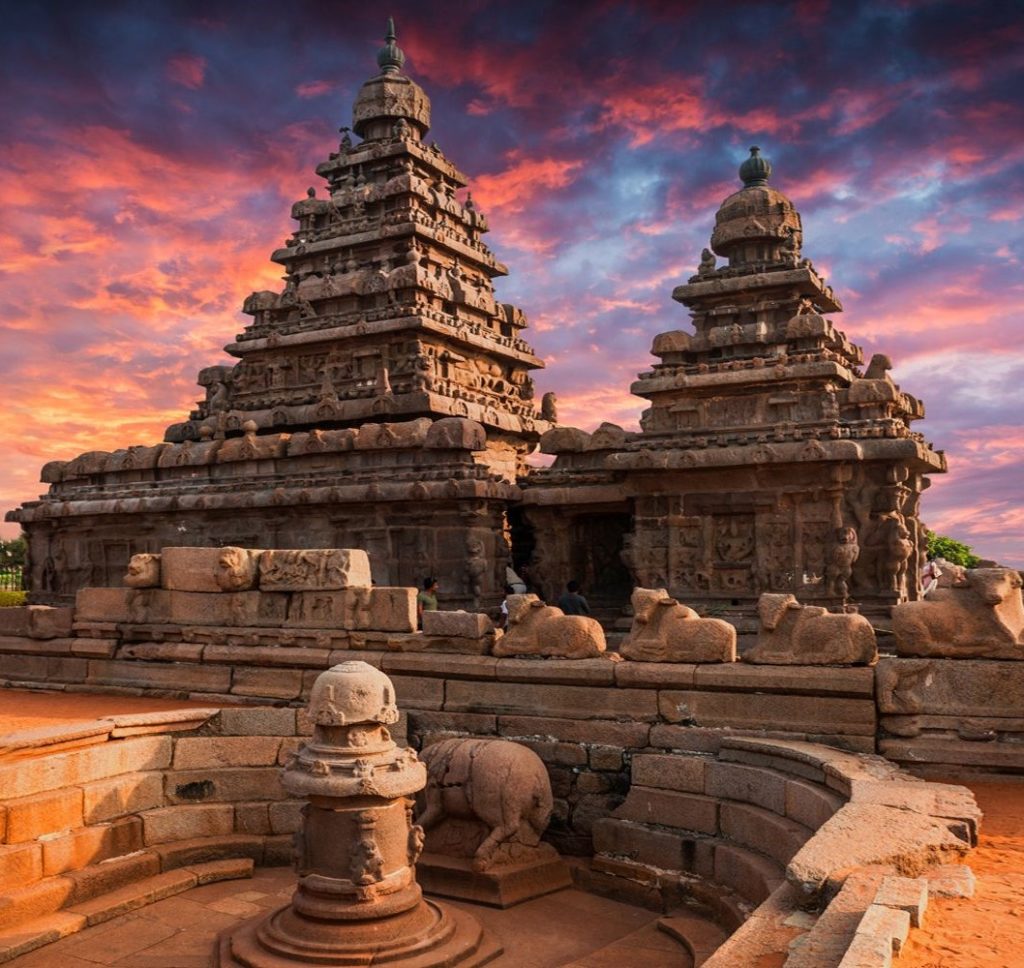
The Shore Temple (built in 700–728 AD) is so named because it overlooks the shore of the Bay of Bengal. It is located near Chennai in Tamil Nadu.It is a structural temple, built with blocks of granite, dating from the 8th century AD. At the time of its creation, the site was a busy port during the reign of Narasimhavarman II of the Pallava dynasty. As one of the Group of Monuments at Mahabalipuram, it has been classified as a UNESCO World Heritage Site since 1984. It is one of the oldest structural (versus rock-cut) stone temples of South India.Shore temple is a complex of temples and shrines.
Marco Polo and the European merchants who came to Asia after him called the site Seven Pagodas. One of these is believed to be the Shore Temple. The temple probably acted as a landmark for navigation of their ships. As it appears like a Pagoda, the name became familiar to the seafarers.
This structural temple complex was the culmination of the architectural creations that were initiated by the King Narasimhavarman II in mid 7th century starting with the Cave temples and the monolithic Rathas. Even though the architectural creation of sculpturing cut-in and cut-out structures continued during subsequent periods, as seen in the Atiranachanda cave, the Pidari rathas and the Tiger cave, the main credit for the architectural elegance of the Shore Temple complex in the category of structural temples goes to the King Rajasimha (700–28 AD), also known as Narasimhavarman II, of the Pallava Dynasty. It is now inferred that this temple complex was the last in a series of temples that seemed to exist in the submerged coastline; this is supported by the appearance of an outline of its sister temples off the coast during the Tsunami of 2004 which struck this coastline. The architecture of the Shore Temple was continued by the Cholas (in the temples that they built) who ruled Tamil Nadu after defeating the Pallavas
RANAKPUR TEMPLE
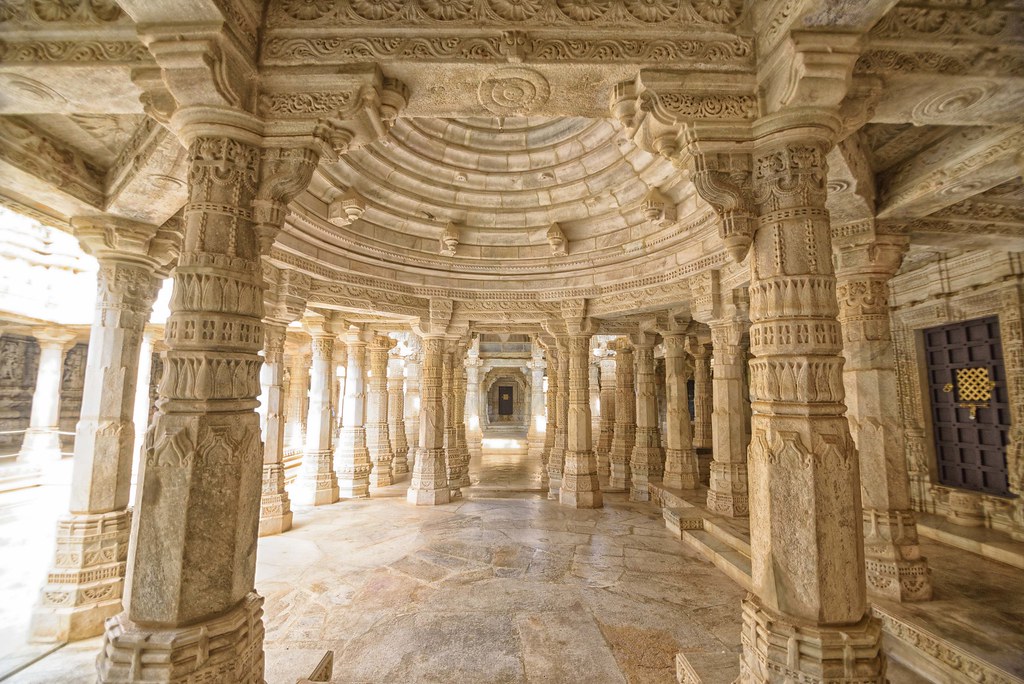
Ranakpur Jain temple or Chaturmukha Dharana Vihara is a Jain temple at Ranakpur is dedicated to Tirthankara Rishabhanatha. The temple is located in a village of Ranakpur near Sadri town in the Pali district of Rajasthan.
Darna Shah, a local Jain businessperson, started construction of the temple in the 15th century following a divine vision. The temple honors Adinath, the first Tirthankar of the present half-cycle (avasarpiṇī) according to Jain cosmology. The Ranakpur temple is one of the largest and most important temples of Jain culture. The campus includes various temples such as Chaumukha temple, Surya temple, Suparshvanatha temple and Amba temple
The construction is well documented in a 1436 CE copper-plate record, inscriptions in the temple and a Sanskrit text Soma-Saubhagya Kavya. Inspired by a dream of a celestial vehicle, Dharna Shah, a Porwal from Ghanerao, commenced its construction in 1389, under the patronage of Rana Kumbha, then ruler of Mewar. The architect who oversaw the project was named Dwepa. There is an inscription on a pillar near the main shrine stating that in 1439 Deepaka, an architect, constructed the temple at the direction of Dharanka, a devoted Jain. When the ground floor was completed, Acharya Soma Sundar Suri of Tapa Gaccha supervised the ceremonies, which are described in Soma-Saubhagya Kavya.] The construction continued until 1458 CE. However, according to the audio guide provided to visitors to the site, construction lasted fifty years (and involved 2785 workers). Another source reports that construction continued until 1496, fifty years from 1446. The town of Ranakpur and the temple are named after the provincial ruler monarch, Rana Kumbha who supported the construction of the temple.
PALITANA TEMPLE
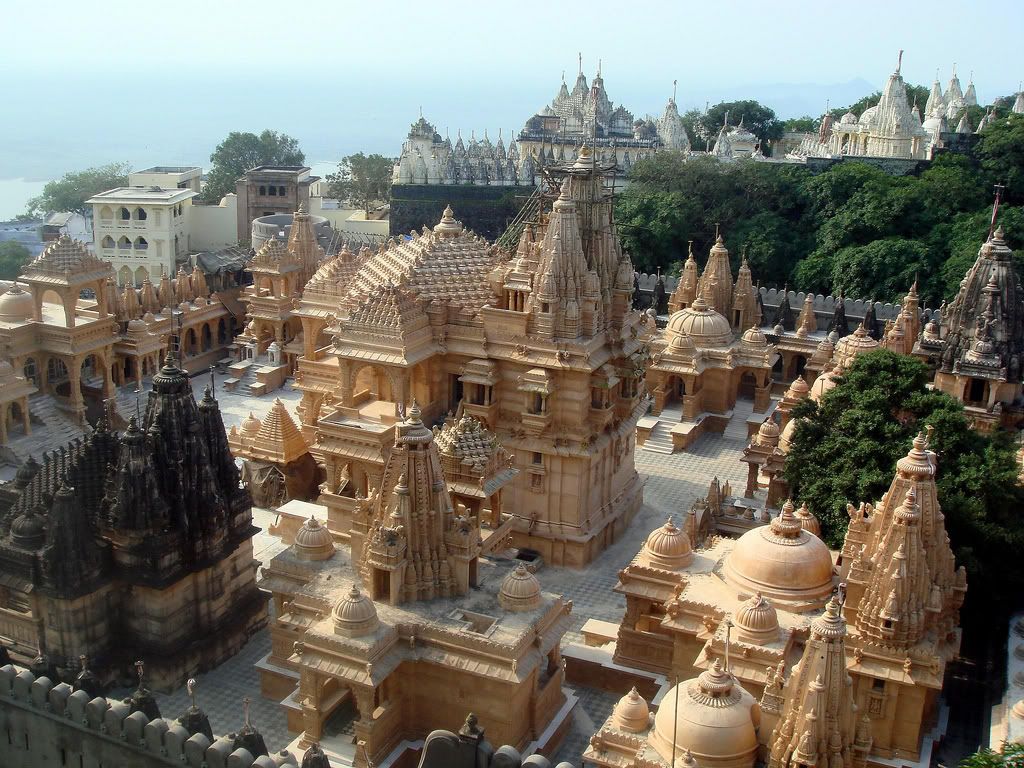
The Palitana temples of Jainism are located on Shatrunjaya hill by the city of Palitana in Bhavnagar district, Gujarat, India. The city of the same name, known previously as Padliptapur, has been dubbed “City of Temples”. Shatrunjaya means a “place of victory against inner enemies” or “which conquers inner enemies”.
This site on Shatrunjaya hill is considered sacred by Svetambara Jains. It is said that 23 of 24 Jain Tirthankaras, except Neminatha, sanctified the hill by their visits. There are approximately 863 marble-carved temples on the hills spread mostly in nine clusters, some being vast temple complexes, while most small in size. The main temple is dedicated to Rishabhanatha, the first Tirthankara; it is the holiest shrine for the Svetambara Murtipujaka sect. The main temple is reached by stepping up 3500 steps. Along with Shikharji in the state of Jharkhand, the two sites are considered the holiest of all pilgrimage places by the Jain community. Jains believe that a visit to this group of temples is essential as a once-in-a-lifetime chance to achieve nirvana or salvation.Of note, Digambara Jains have only one temple here on the hills.
Hingraj Ambikadevi (known as Hinglaj Mata) is considered as the presiding deity of the hill, who is a Jain Yakshini (attendant deity).
Also, on the summit, there is a shrine of a Muslim saint by name Angar Pir who is reported to have protected the temples during Muslim invasions in early 14th century
TUGNATH TEMPLE
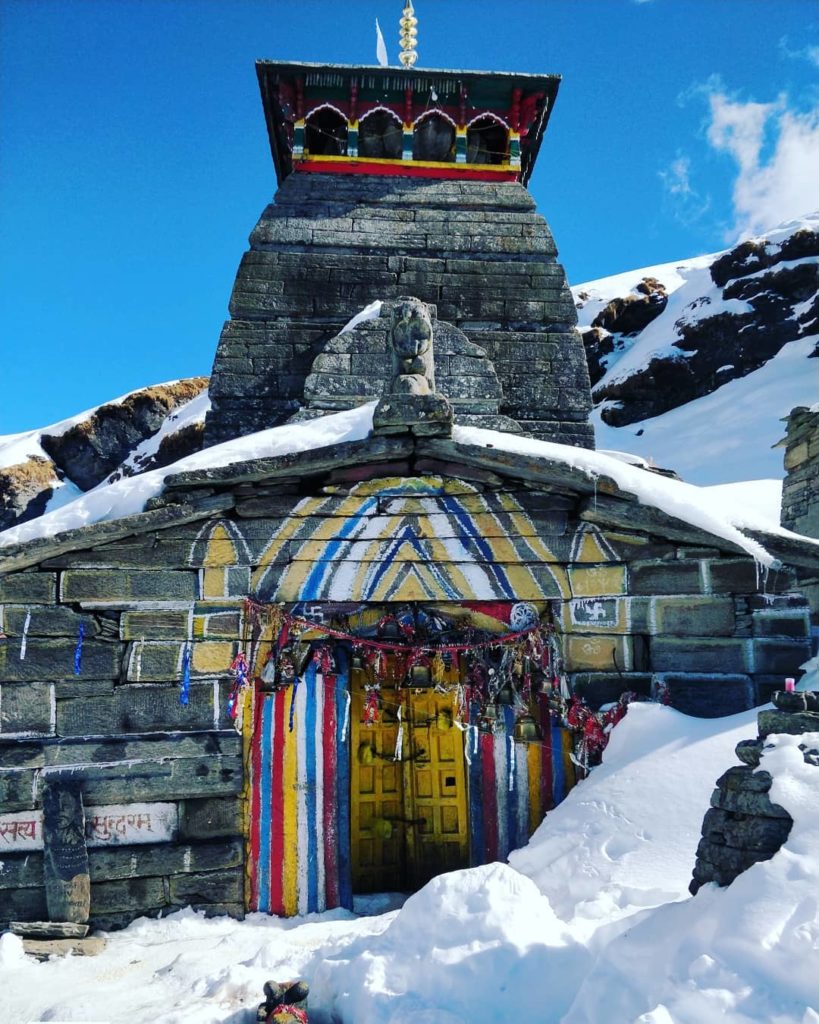
Tungnath is one of the highest Shiva temples in the world and is the highest of the five Panch Kedar temples located in the mountain range of Tunganath in Rudraprayag district, in the Indian state of Uttarakhand. The Tunganath (literal meaning: Lord of the peaks) mountains form the Mandakini and Alaknanda river valleys. It is located at an altitude of 3,680 m (12,073 ft), and just below the peak of Chandrashila. and is the third (Tritiya Kedar) in the pecking order of the Panch Kedars. It has a rich legend linked to the Pandavas, heroes of the Mahabharata epic
JAGATPITA BRAHMA MANDIR
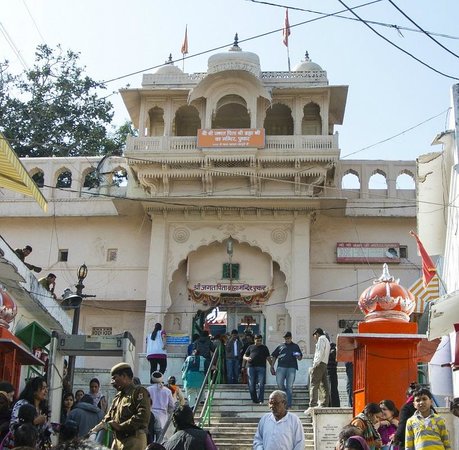
Jagatpita Brahma Mandir is a Hindu temple situated at Pushkar in the Indian state of Rajasthan, close to the sacred Pushkar Lake to which its legend has an indelible link. The temple is one of very few existing temples dedicated to the Hindu creator-god Brahma in India and remains the most prominent among them.
The temple structure dates to the 14th century, partly rebuilt later. The temple is made of marble and stone slabs. It has a distinct red pinnacle (shikhara) and a hamsa bird motif. The temple sanctum sanctorum holds the image of four-headed Brahma and his consort Gayatri (goddess of milk). The temple is governed by the Sanyasi (ascetic) sect priesthood. On Kartik Poornima, a festival dedicated to Brahma is held when large numbers of pilgrims visit the temple, after bathing in the sacred lake.The temple, which is set on high plinth, is approached through a number of marble steps leading to an entrance gate archway, decorated with pillared canopies. The entry from the gate leads to a pillared outdoor hall (Mandapa) and then the sanctum sanctorum (Garbhagriha). The temple is built with stone slabs and blocks, joined together with molten lead. The red shikara (spire) of the temple and symbol of a hamsa (a swan or goose) – the mount of Brahma – are distinct features of the temple. The shikara is about 70 feet (21 m) in height. The hamsa motif decorates the main entry gate. Marble floor (in black and white checks) and walls inside the temple have been inlaid with hundreds of silver coins by devotees (with their names inscribed), as mark of offering to Brahma. There is a silver turtle in the mandap, that is displayed on the floor of the temple facing the Garbhagriha, which is also built in marble. The marble flooring has been replaced from time-to-time.
Brahma’s central icon (murti) made of marble was deified in the garbhagriha 718 AD by Adi Shankara.
KONARK TEMPLE
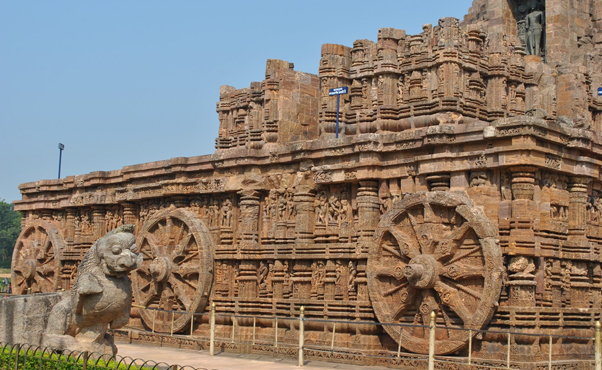
Konark Sun Temple (Konark Surya Mandir) is a 13th-century CE Sun temple at Konark about 35 kilometres (22 mi) northeast from Puri on the coastline of Odisha, India.The temple is attributed to king Narasimhadeva I of the Eastern Ganga Dynasty about 1250 CE.
Dedicated to the Hindu Sun God Surya, what remains of the temple complex has the appearance of a 100-foot (30 m) high chariot with immense wheels and horses, all carved from stone. Once over 200 feet (61 m) high, much of the temple is now in ruins, in particular the large shikara tower over the sanctuary; at one time this rose much higher than the mandapa that remains. The structures and elements that have survived are famed for their intricate artwork, iconography, and themes, including erotic kama and mithuna scenes. Also called the Surya Devalaya, it is a classic illustration of the Odisha style of Architecture or Kalinga Architecture .
The cause of the destruction of the Konark temple is unclear and remains a source of controversy Theories range from natural damage to deliberate destruction of the temple in the course of being sacked several times by Muslim armies between the 15th and 17th centuries. This temple was called the “Black Pagoda” in European sailor accounts as early as 1676 because its great tower appeared black. Similarly, the Jagannath Temple in Puri was called the “White Pagoda”. Both temples served as important landmarks for sailors in the Bay of Bengal. The temple that exists today was partially restored by the conservation efforts of British India-era archaeological teams. Declared a UNESCO world heritage site in 1984, it remains a major pilgrimage site for Hindus, who gather here every year for the Chandrabhaga Mela around the month of February.
VITTALA TEMPLE,HAMPI
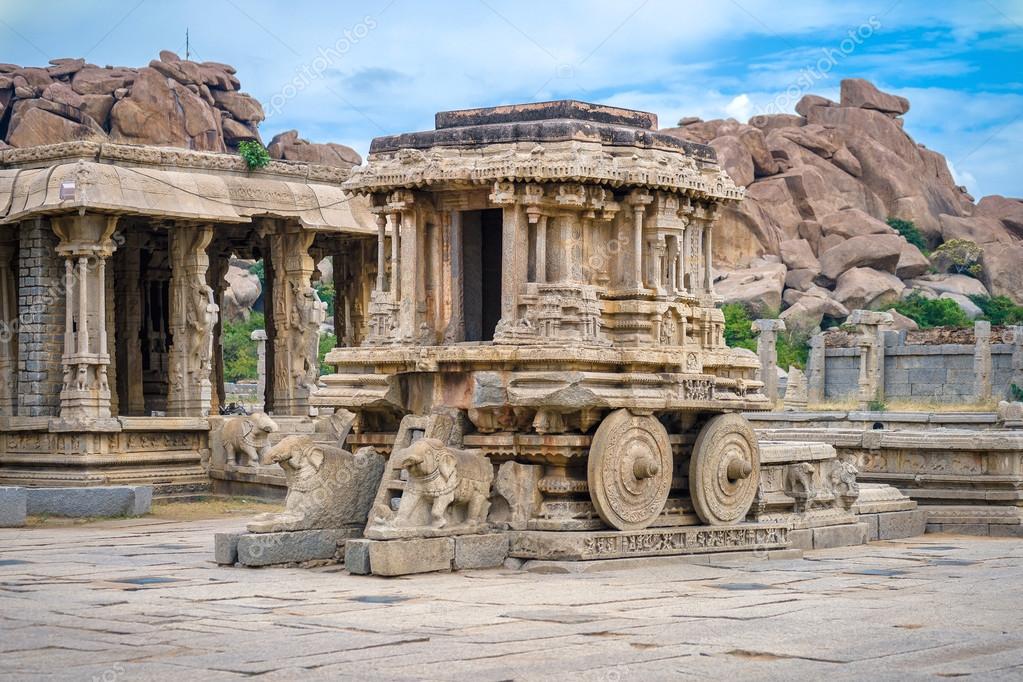
Hampi or Hampe, also referred to as the Group of Monuments at Hampi, is a UNESCO World Heritage Site located in east-central Karnataka, India. It became the pilgrimage centre of the Hindu religion. It was the capital of the Vijayanagara Empire in the 14th century. Chronicles left by Persian and European travellers, particularly the Portuguese, say that the Hampi state was a prosperous, wealthy and grand city near the Tungabhadra River, with numerous temples, farms and trading markets. By 1500 CE, Hampi-Vijayanagara was the world’s second-largest medieval-era city after Beijing, and probably India’s richest at that time, attracting traders from Persia and Portugal. The Vijayanagara Empire was defeated by a coalition of Muslim sultanates; its capital was conquered, pillaged and destroyed by sultanate armies in 1565, after which Hampi remained in ruins.
Located in Karnataka near the modern-era city of Hosapete, Hampi’s ruins are spread over 4,100 hectares (16 sq mi) and it has been described by UNESCO as an “austere, grandiose site” of more than 1,600 surviving remains of the last great Hindu kingdom in South India that includes “forts, riverside features, royal and sacred complexes, temples, shrines, pillared halls, mandapas, memorial structures, water structures and others” Hampi predates the Vijayanagara Empire; there is evidence of Ashokan epigraphy, and it is mentioned in the Ramayana and the Puranas of Hinduism as Pampaa Devi Tirtha Kshetra Hampi continues to be an important religious centre, housing the Virupaksha Temple, an active Adi Shankara-linked monastery and various monuments belonging to the old city
MUNDESHWARI TEMPLE,BIHAR
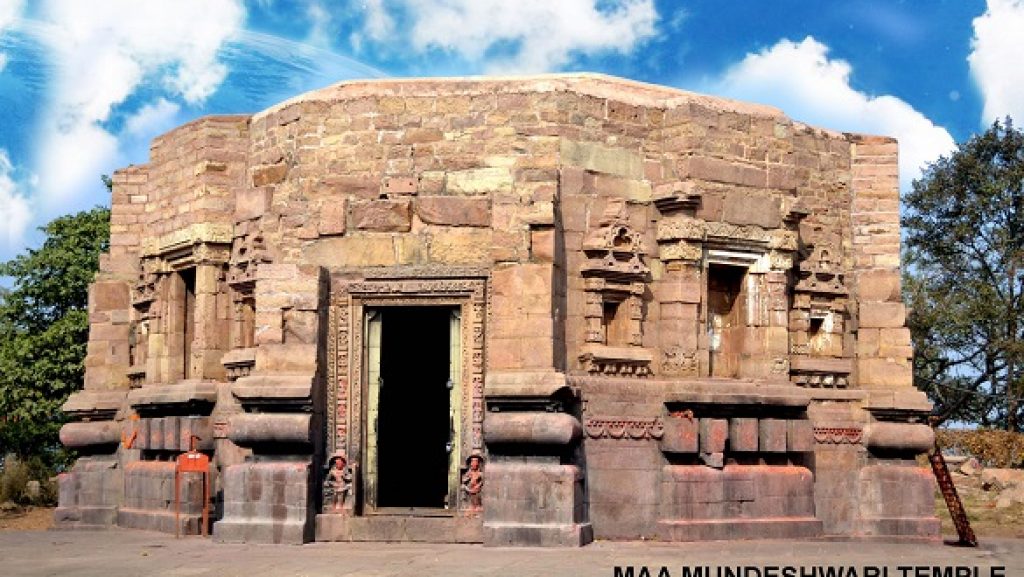
The Mundeshwari Devi Temple (also spelled as Mundesvari) is located at Kaura in Kaimur district in the state of Bihar, India on the Mundeshwari Hills. It is an ancient temple dedicated to the worship of Lord Shiva and Shakti and is considered one of the oldest Hindu temples in India.It is also considered as the oldest functional Hindu temple of India.The information plaque erected by the Archaeological Survey of India (ASI) at the site indicates the dating of the temple to 625 CE. Hindu inscriptions dated 635 CE were found in the temple.The temple is a protected monument under ASI since 1915. Local folklores say that Chanda and Munda who were full brothers and chieftains of great demon Mahishasura were rulers of the area. Mahishasura fought decisive battle with Gooddess Durga as mentioned in Durga Shaptshati. Munda made goddess Mundeshwari Bhawani temple while his younger brother Chanda made Chandeshwari temple at top of Madurana hill near Chainpur.
But historical facts better explain its origin and its creators. After a study of broken Mundeshwari inscription of Brahmi script and its two parts found in 1891 and 1903 by Bloch (Now joined and kept in National Museum, Kolkata), Dr NG Majumdar and Dr KC Panigrahi stated to be the temple to be earlier than 4th century AD.
But recovery of a royal seal of great Shri Lankan emperor Maharaju Dutthagamani (101-77BC) from the place in 2003, changed the history. It established that a royal pilgrims group or monks from Shri Lanka visited the place during their journey to Sarnath from Bodh Gaya through famous Dakshinapath highway sometime between 101BC to 77BC and lost the seal here.
The existence of Naga (serpent) on four faced shivalingam, Naga janeu (sacred thread) on Ganesha idols not found anywhere in India and also on broken pieces scattered around the hill clearly indicated that it was a construction by rulers of Naga dynasty (110BC to 315AD) who used serpent as their royal sign.
Lad Khan Temple – Aihole
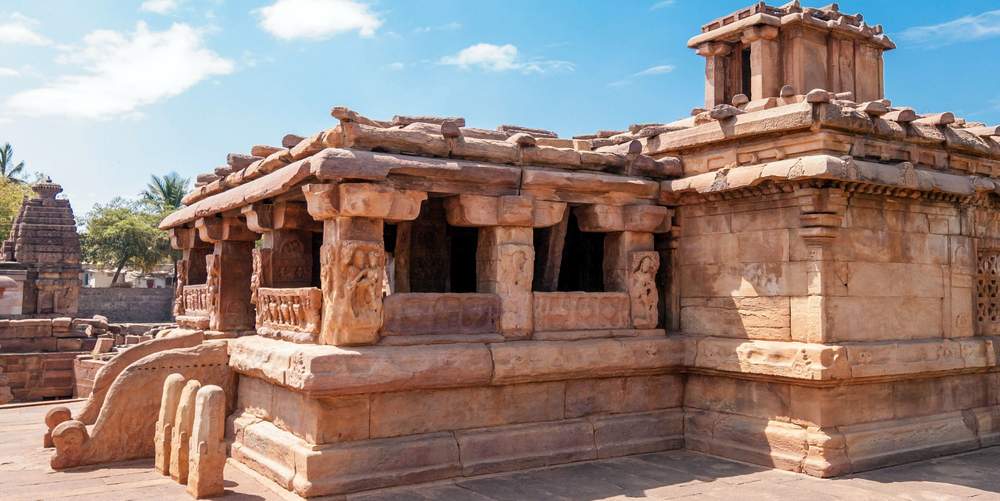
The Chalukya Shiva Temple (or Lad khan temple), dedicated to Shiva, is one of the oldest Hindu temples and is located in the group of monuments at Aihole in the state of Karnataka, India. Formerly dated to the 7th or 8th century, it is now dated to about the 5th century. It is located to the south of the Durga temple, Aihole.
The temple shows clear signs of following early timber models, none of which have survived. This is seen for example in the construction of the roof of the mandapa. The temple consists of a shrine (garba griha) with a mandapa in front of it, and a covered path for circumambulating the sanctuary, seen in other very early temples. The mukha mandapa is situated in front of the sanctum and consists of a set of 12 carved pillars. The sabha mandapa leads to the maha mandapa and the pillars are arranged to form two concentric squares. The walls have floral patterns on them and the windows have lattice work done in the northern style. Facing the sanctum, a second smaller sanctum is situated above the center of the hall whose outer walls have many carved images
Originally dedicated to Vishnu, now the main shrine houses a Shiva Linga with a Nandi. The temple was built in a Panchayatana style, indicating a very early experiment in temple construction. The special feature of this temple is that it starts with a rectangular structure and ends with a square structure. Based on a wooden construction design, the square and rectangular plan has a steep roof, which is an adaptation of wooden styles in stone.
The maha mandapa is open to exterior by large windows between the pillars. The roof above the maha mandapa shows a turret as a first version of the future forms of tower: shikharas in north India and vimanas in the south.
LINGARAJA TEMPLE- BHUBANESHWAR
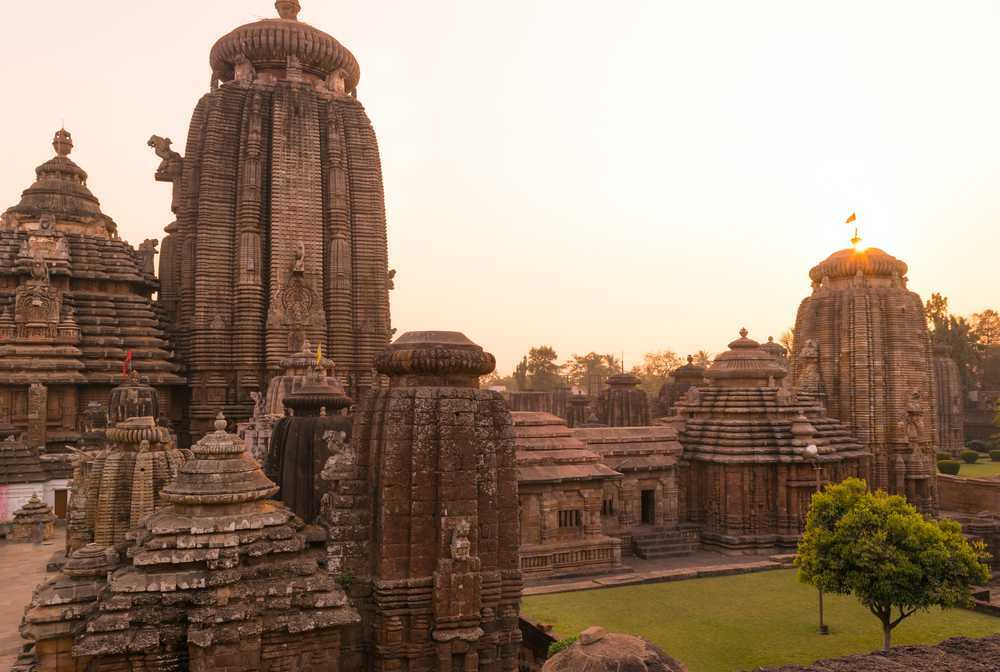
Lingaraja Temple is a Hindu temple dedicated to Shiva and is one of the oldest temples in Bhubaneswar, the capital of the Indian state of Odisha. The temple is the most prominent landmark of Bhubaneswar city and one of the major tourist attractions of the state.
The Lingaraja temple is the largest temple in Bhubaneswar. The central tower of the temple is 180 ft (55 m) tall. The temple represents the quintessence of the Kalinga architecture and culminating the medieval stages of the architectural tradition at Bhubaneswar. The temple is believed to be built by the kings from the Somavamsi dynasty, with later additions from the Ganga rulers. The temple is built in the Deula style that has four components namely, vimana (structure containing the sanctum), jagamohana (assembly hall), natamandira (festival hall) and bhoga-mandapa (hall of offerings), each increasing in the height to its predecessor. The temple complex has 50 other shrines and is enclosed by a large compound wall.
Bhubaneswar is called the Ekamra Kshetra as the deity of Lingaraja was originally under a mango tree (Ekamra) as noted in Ekamra Purana, a 13th-century Sanskrit treatise. The temple is active in worship practises, unlike most other temples in Bhubaneswar and Shiva is worshipped as Harihara, a combined form of Vishnu and Shiva. The temple has images of Vishnu, possibly because of the rising prominence of Jagannath sect emanating from the Ganga rulers who built the Jagannath Temple in Puri in the 12th century.
Lingaraja temple is maintained by the Temple Trust Board and the Archaeological Survey of India (ASI). The temple has an average of 6,000 visitors per day and receives lakhs of visitors during festivals. Shivaratri festival is the major festival celebrated in the temple and event during 2012 witnessed 200,000 visitors. The temple compound is not open to non-Hindus, but there is a viewing platform beside the wall offering a good view of the main exteriors. This was originally erected for a visit by Lord Curzon when Viceroy
ADI KUMBESWARAR TEMPLE
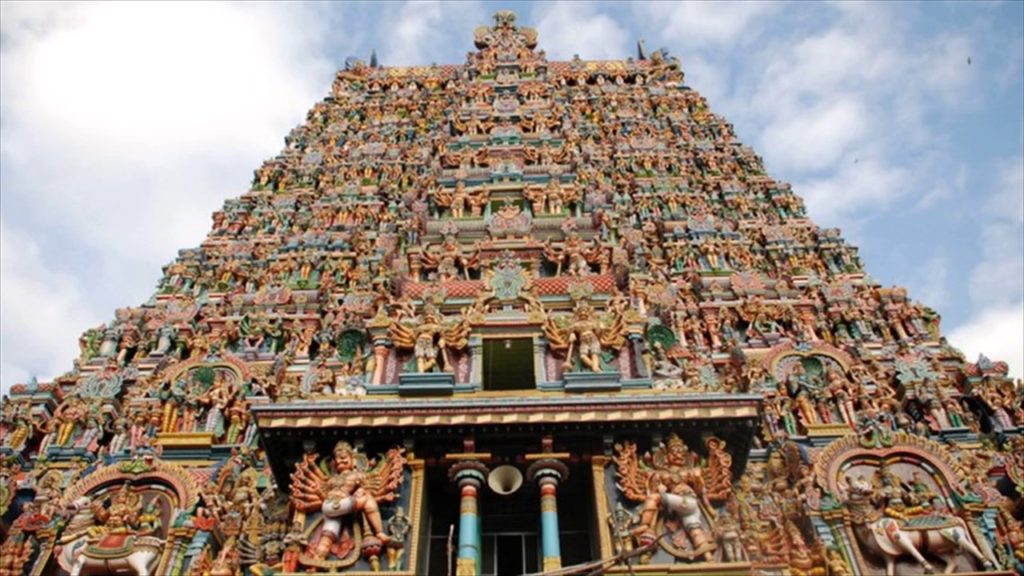
Adi Kumbeswarar Temple, Kumbakonam is a Hindu temple dedicated to the deity Shiva, located in the town of Kumbakonam in Thanjavur District Tamil Nadu, India. Shiva is worshiped as Adi Kumbeswarar, and is represented by the lingam. His consort Parvati is depicted as Mangalambigai Amman. The presiding deity is revered in the 7th century Tamil Saiva canonical work, the Tevaram, written by Tamil saint poets known as the Nayanmars and classified as Paadal Petra Sthalam.
The temple complex covers an area of 30,181 sq ft (2,803.9 m2) and houses four gateway towers known as gopurams. The tallest is the eastern tower, with 11 stories and a height of 128 feet (39 m) The temple has numerous shrines, with those of Kumbeswarar and Mangalambigai Amman being the most prominent. The temple complex houses many halls; the most notable is the sixteen-pillared hall built during the Vijayanagar period that has all the 27 stars and 12 zodiacs sculpted in a single stone.
The temple has six daily rituals at various times from 5:30 a.m. to 9 p.m., and twelve yearly festivals on its calendar, with the Masi Magam festival celebrated during the Tamil month of Maasi (February – March) being the most prominent.
The present masonry structure was built during the Chola dynasty in the 9th century, while later expansions are attributed to Vijayanagar rulers of the Thanjavur Nayaks of the 16th century. The temple is maintained and administered by the Hindu Religious and Charitable Endowments Department of the Government of Tamil Nadu.
DWARKADHISH TEMPLE
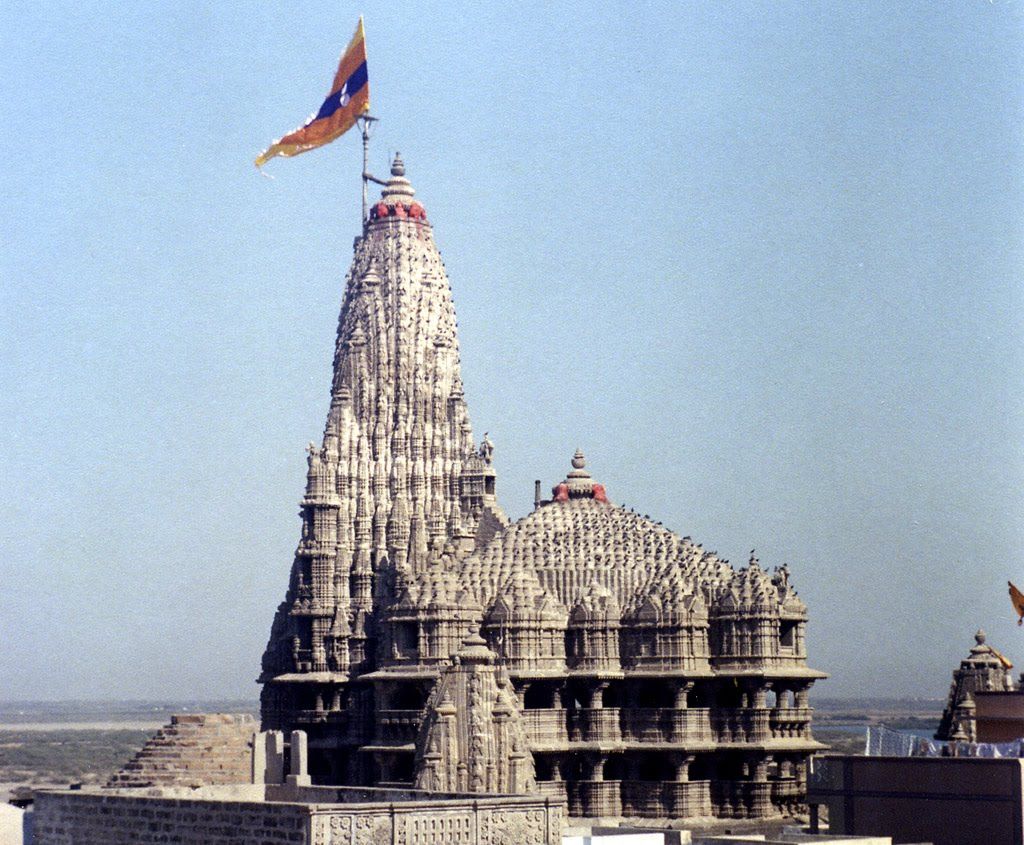
The Dwarkadhish temple, also known as the Jagat Mandir and occasionally spelled Dwarakadheesh, is a Hindu temple dedicated to god Krishna, who is worshiped here by the name Dwarkadhish, or ‘King of Dwarka’. The temple is located at Dwarka, Gujarat, India, one of the destinations of Char Dham, a Hindu pilgrimage circuit. The main shrine of the five storied building, supported by 72 pillars, is known as Jagat Mandir or Nija Mandir, archaeological findings suggest it to be 2,000 – 2,200 years old. The temple was enlarged in the 15th- 16th century.The Dwarkadhish Temple is a Pushtimarg temple, hence it follows the guidelines and rituals created by Vallabhacharya and Vitheleshnath.
According to tradition, the original temple was believed to have been built by Krishna’s grandson, Vajranabha, over the hari-griha (Krishna’s residential place). The original structure was destroyed by Mahmud Begada in 1472, and subsequently rebuilt in the 15th-16th century. The temple became part of the Char Dham pilgrimage considered sacred by Hindus in India. Adi Shankaracharya, the 8th century Hindu theologian and philosopher, visited the shrine. The other three being comprising Rameswaram, Badrinath and Puri. Even today a memorial within the temple is dedicated to his visit. Dwarakadheesh is the 98th Divya Desam of Vishnu on the subcontinent, glorified in the Divya Prabandha sacred texts. it was rebuilt by Raja Jagat Singh Rathore The temple is at an elevation of 12.19 metres (40.0 ft) above mean sea-level. It faces west. The temple layout consists of a garbhagriha (Nijamandira or Harigraha) and an antarala (an antechamber).It is conjectured that this temple location is 2,500 years old where Krishna had built his city and a temple. However, the existing temple is dated to 16th century.
AMBARNATH TEMPLE
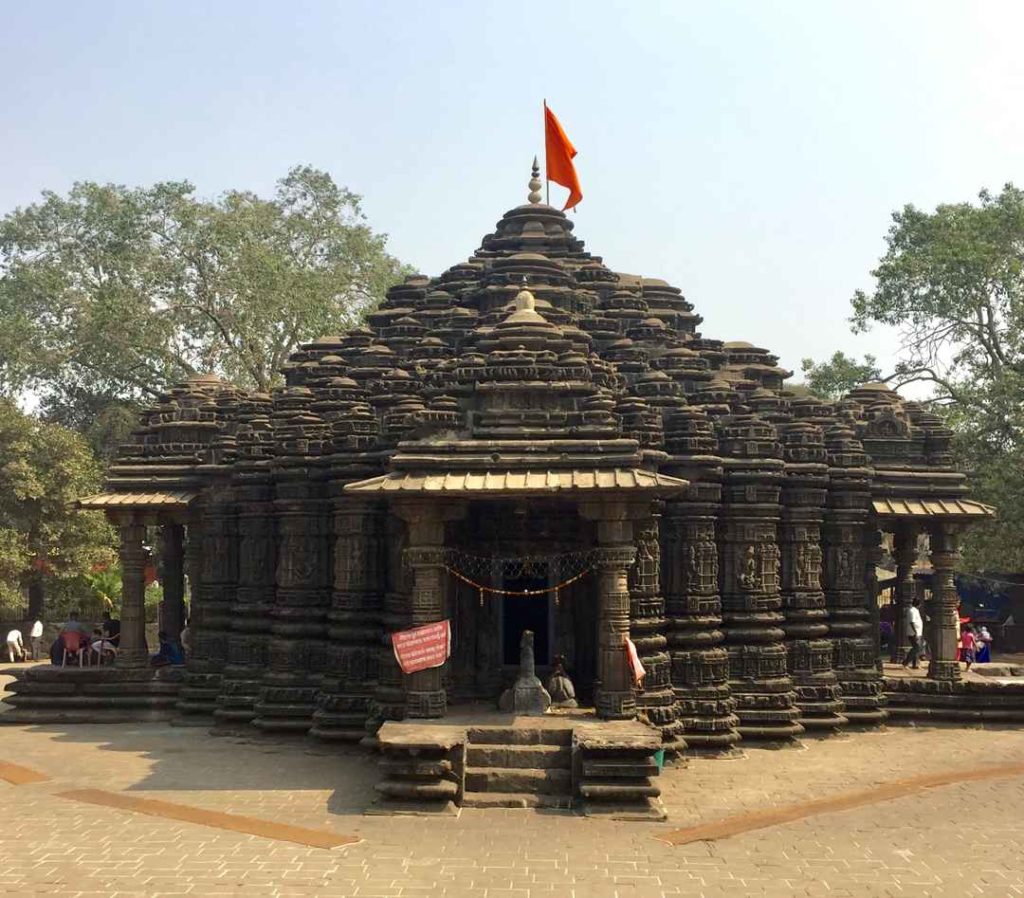
The Shiv Mandir of Ambarnath is a historic 11th-century Hindu temple, still in use, at Ambarnath near Mumbai, in Maharashtra, India. It is also known as the Ambreshwar Shiva Temple, and known locally as Puratana Shivalaya. It is situated on the bank of Vadavan (Waldhuni) river, 2 km away from Ambarnath (East) railway station. The temple was built in 1060 AD beautifully carved in stone. It was probably built by Shilahara king Chhittaraja, it may also have been rebuilt by his son Mummuni.
Unusually, the sanctuary or garbhagriha is below ground, reached by some 20 steps down from the mandapa, and is open to the sky as the shikhara tower above stops abruptly at a little above the height of the mandapa, and was apparently never completed. It is in bhumija form, and if completed would have been close in form to the Udayesvara Temple also known as Neelkantheshwara temple in Udaipur, Madhya Pradesh, begun in 1059 and the Gondeshwar Temple at Sinnar. It is clear from what was built that the shikhara would have followed these in having four corner bands of gavaksha-honeycomb sweeping uninterrupted up the full height of the tower, while in between each face has rows of five spirelets on individual podia, reducing in size up the tower.
The mandapa has three porches. Much of the exterior figure carving is damaged, but some female and divine figures remain
VARADARAJA PERUMAL TEMPLE
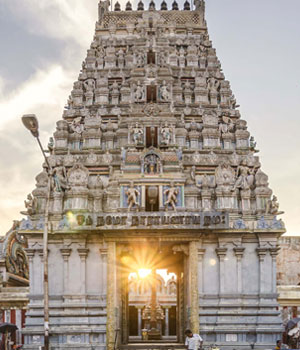
Varadharaja Perumal Temple or Hastagiri or Attiyuran is a Hindu temple dedicated to Lord Vishnu located in the holy city of Kanchipuram, Tamil Nadu, India. It is one of the Divya Desams, the 108 temples of Vishnu believed to have been visited by the 12 poet saints, or Alwars.It is located in a suburb of Kanchipuram known as the Vishnu Kanchi that is a home for many famous Vishnu temples. One of the greatest Hindu scholars of Vaishnava Vishishtadvaita philosophy, Ramanuja is believed to have resided in this temple.The temple along with Ekambareswarar Temple and Kamakshi Amman Temple in Kanchipuram is popularly known as Mumurtivasam (abode of trio),while Srirangam is referred to as: ‘Koil’ (meaning: “temple”) and Tirupati as: ‘Malai’ (Meaning: “hill”). Among the Divya Desams, Kanchipuram Varadaraja Perumal temple is known as: ‘Perumal Koil’. This is one of the most sacred places for Vaishnavites. The fourth of the Divya Desams that completes this series is Melukote—which is known as Thirunarayanapuram. Vaishnavites believe that visiting all four places without a break will guarantee one a place in paramapadam.
There is a temple of Varadarajaswamy in Kurmai of Palamaner mandal in Chittoor district of Andhra Pradesh, called the Kurma Varadaraja Swamy Temple.
SRI RANGANATHASWAMY TEMPLE
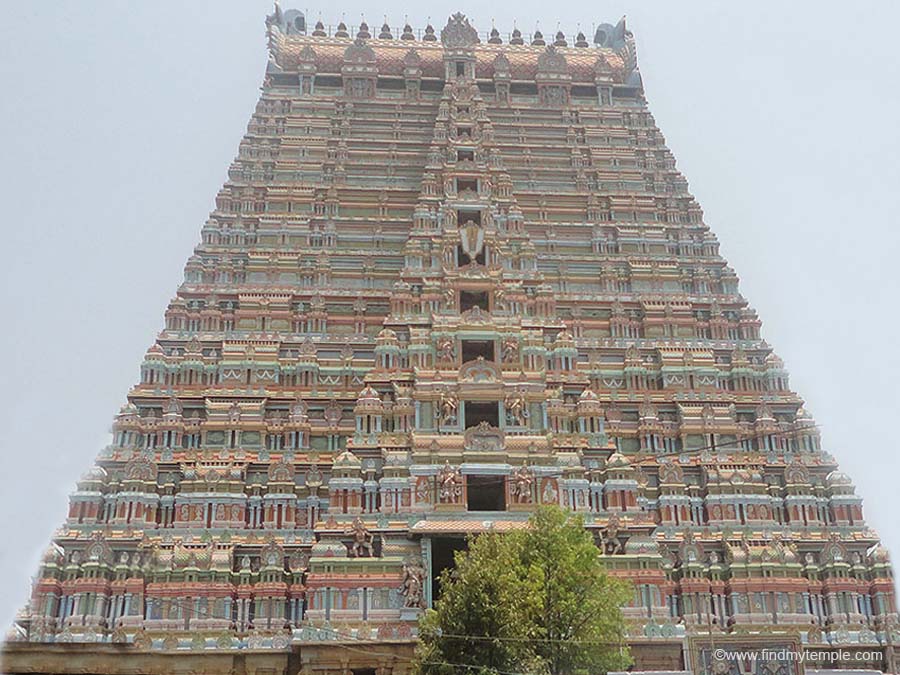
The Sri Ranganathaswamy Temple or Thiruvarangam is a Hindu temple dedicated to Ranganatha, a form of the Supreme God, Maha Vishnu, located in Srirangam, Tiruchirapalli, Tamil Nadu, India.Constructed in the Dravidian architectural style, the temple is glorified by Alvars in their Divya Prabhanda and has the unique distinction of being not only the foremost among the 108 Divya Desams dedicated to Vishnu. but also the largest functioning Hindu temple in the world.
The Place Srirangpatna had the name of the Srirangapuri in the early ages later it got the name of the Srirangapatna. The town is an island being surrounded by the river Cauvery. In this town there are temple of sriranganatha. Sri Lakshinarasimha, Sri Gangadereshwara, Sri Jyothirmaheshwara and other small temples. Among them the main temple is that of Sri Ranganatha. The inner apartment of SriRanganatha temple was built in 817 A.D by a lady by name Hambi, of the class of dancers in the year 894 A.D.
VIRUPAKSHA TEMPLE
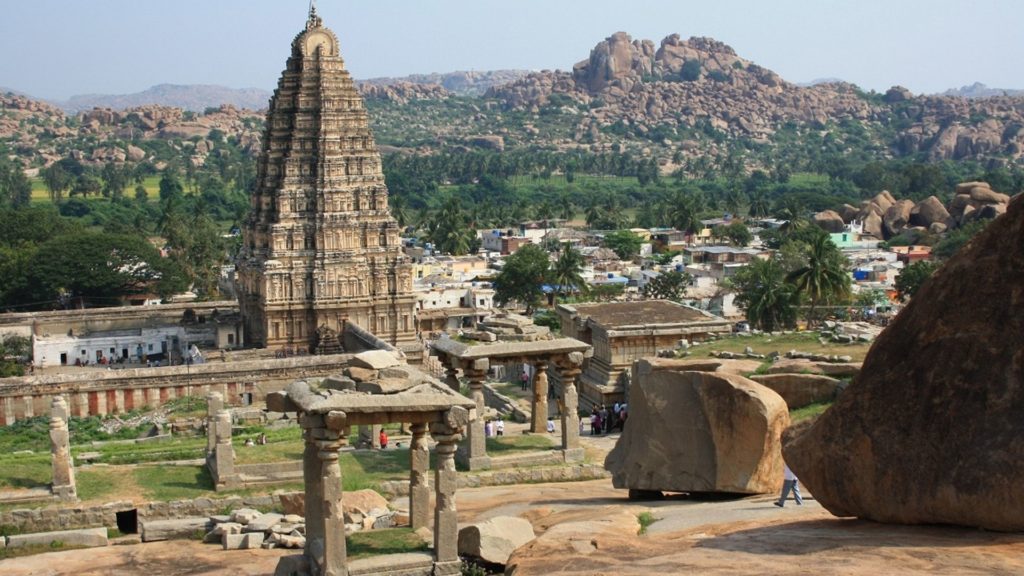
Virupaksha Temple is located in Hampi in the Ballari district of Karnataka, India. It is part of the Group of Monuments at Hampi, designated as a UNESCO World Heritage Site. The temple is dedicated to Lord Virupaksha, a form of Shiva. The temple was built by Lakkan Dandesha, a nayaka (chieftain) under the ruler Deva Raya II also known as Prauda Deva Raya of the Vijayanagara Empire.
Hampi, capital of the Vijayanagara empire, sits on the banks of the Tungabhadra River. Virupaksha Temple is the main center of pilgrimage at Hampi, and had been considered the most sacred sanctuary over the centuries. It is intact among the surrounding ruins and is still used in worship . The temple is dedicated to Lord Shiva, known here as Virupaksha, as the consort of the local goddess Pampadevi who is associated with the Tungabhadra River. There is also a Virupakshini Amma temple (mother goddess) in a village called Nalagamapalle, Chittoor district, Andhra Pradesh, approximately 100 km from Tirupati.
CHENNAKESAVA TEMPLE
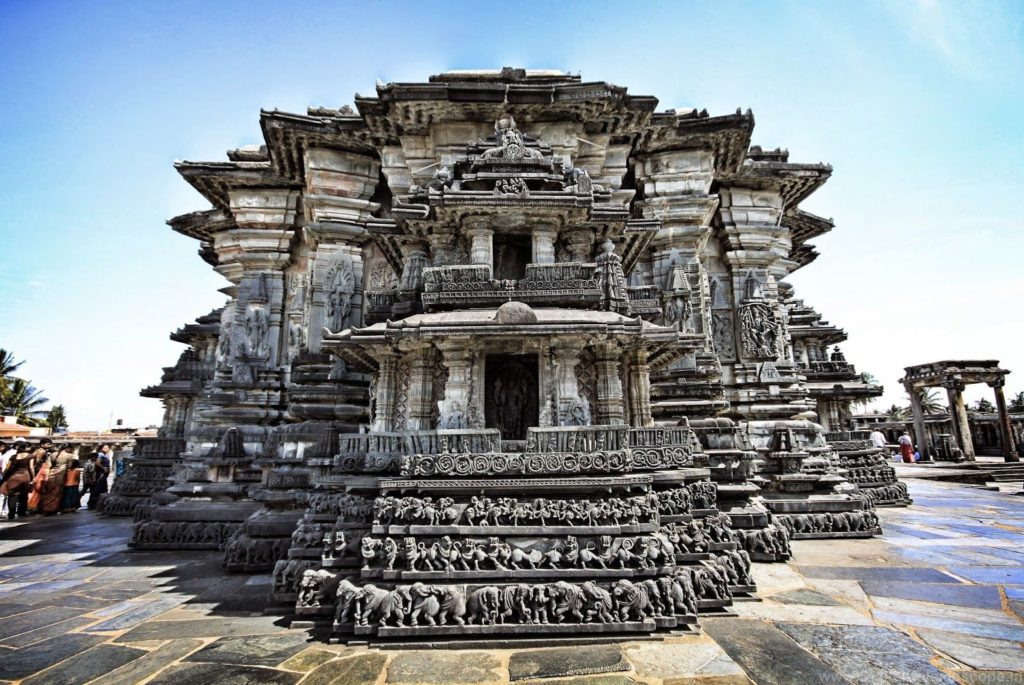
The Chennakeshava Temple, also referred to as Keshava, Kesava or Vijayanarayana Temple of Belur, is a 12th-century Hindu temple in the Hassan district of Karnataka state, India. It was commissioned by King Vishnuvardhana in 1117 CE, on the banks of the Yagachi River in Belur also called Velapura, an early Hoysala Empire capital. The temple was built over three generations and took 103 years to finish.It was repeatedly damaged and plundered during wars, repeatedly rebuilt and repaired over its history. It is 35 km from Hassan city and about 200 km from Bengaluru.
Chennakesava (lit, “handsome Kesava”) is a form of the Hindu god Vishnu. The temple is dedicated to Vishnu and has been an active Hindu temple since its founding. It is reverentially described in medieval Hindu texts, and remains an important pilgrimage site in Vaishnavism. The temple is remarkable for its architecture, sculptures, reliefs, friezes as well its iconography, inscriptions and history. The temple artwork depicts scenes of secular life in the 12th century, dancers and musicians, as well as a pictorial narration of Hindu texts such as the Ramayana, the Mahabharata and the Puranas through numerous friezes. It is a Vaishnava temple that reverentially includes many themes from Shaivism and Shaktism, as well as images of a Jina from Jainism and the Buddha from Buddhism. The Chennakeshava temple is a testimony to the artistic, cultural and theological perspectives in 12th century South India and the Hoysala Empire rule.
The Belur temple complex along with the nearby Hindu and Jain Temples at Halebidu have been proposed to be listed under UNESCO World Heritage Sites.
SRI CHAMUNDESHWARI TEMPLE
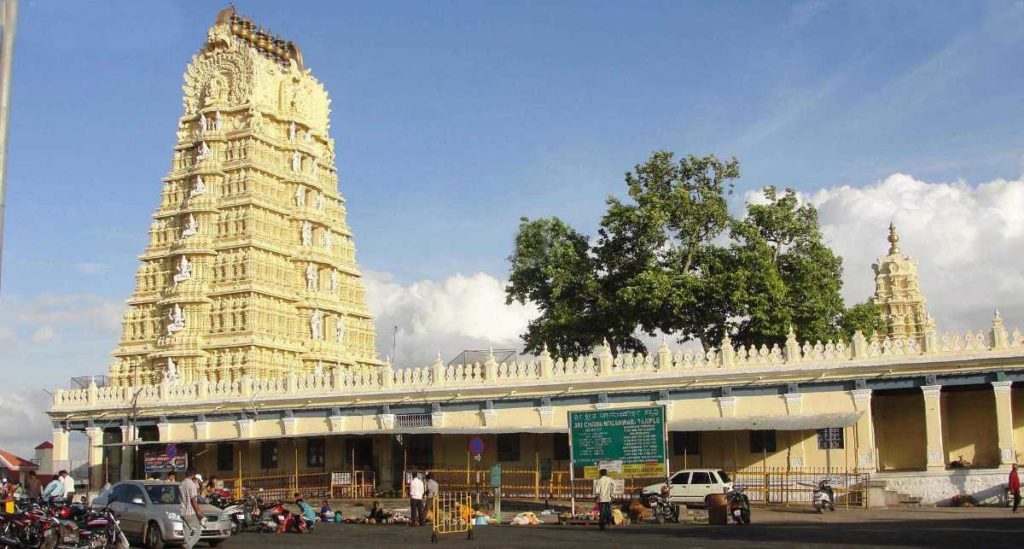
The Chamundeshwari Temple is a Hindu temple located on the top of Chamundi Hills about 13 km from the palace city of Mysore in the state of Karnataka in India. The temple was named after Chamundeshwari or Durga, the fierce form of Shakti, a tutelary deity held in reverence for centuries by Mysore Maharajas.
Chamundeshwari is called by the people of Karnataka as Naada Devathe which means State Goddess. It is situated at the elevation of 838 feet from the mean sea level.
The original shrine is thought to have been built in the 12th century by Hoysala rulers while its tower was probably built by the Vijayanagar rulers of the 17th century. In 1659, a flight of one thousand steps was built leading up to the 3000-foot summit of the hill. At the temple are several images of Nandi (the bull mount of Shiva). There is a huge granite Nandi on the 700th step on the hill in front of a small Shiva temple a short distance away. This Nandi is over 15 feet high, and 24 feet long and around its neck are exquisite bells.
DAKSHINESHWAR KALI TEMPLE
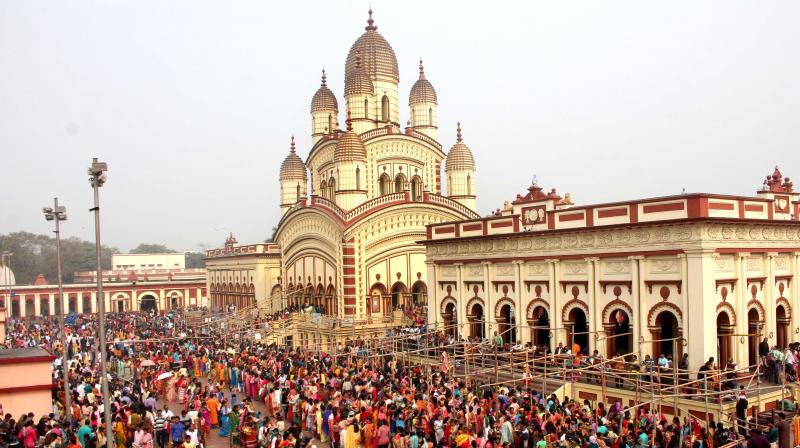
Dakshineswar Kali Temple is a Hindu navaratna temple located at Dakshineswar. Situated on the eastern bank of the Hooghly River, the presiding deity of the temple is Bhavatarini, an aspect of Kali, who is form of Adi Shakti .The temple was built in 1855 by Rani Rashmoni, a philanthropist and a devotee of Kali. The temple is known for its association with Ramakrishna and Ma Sarada Devi, mystics of 19th Century Bengal.
The temple compound, apart from the nine-spired main temple, contains a large courtyard surrounding the temple, with rooms along the boundary walls. There are twelve shrines dedicated to Shiva—Kali’s companion—along the riverfront, a temple to Radha-Krishna, a bathing ghat on the river, a shrine dedicated to Rani Rashmoni. ‘Nahabat’, the chamber in the northwestern corner just beyond the last of the Shiva temples, is where Ramakrishna and Maa Sarada spent a considerable part of their lives
SOMESHWARA TEMPLE
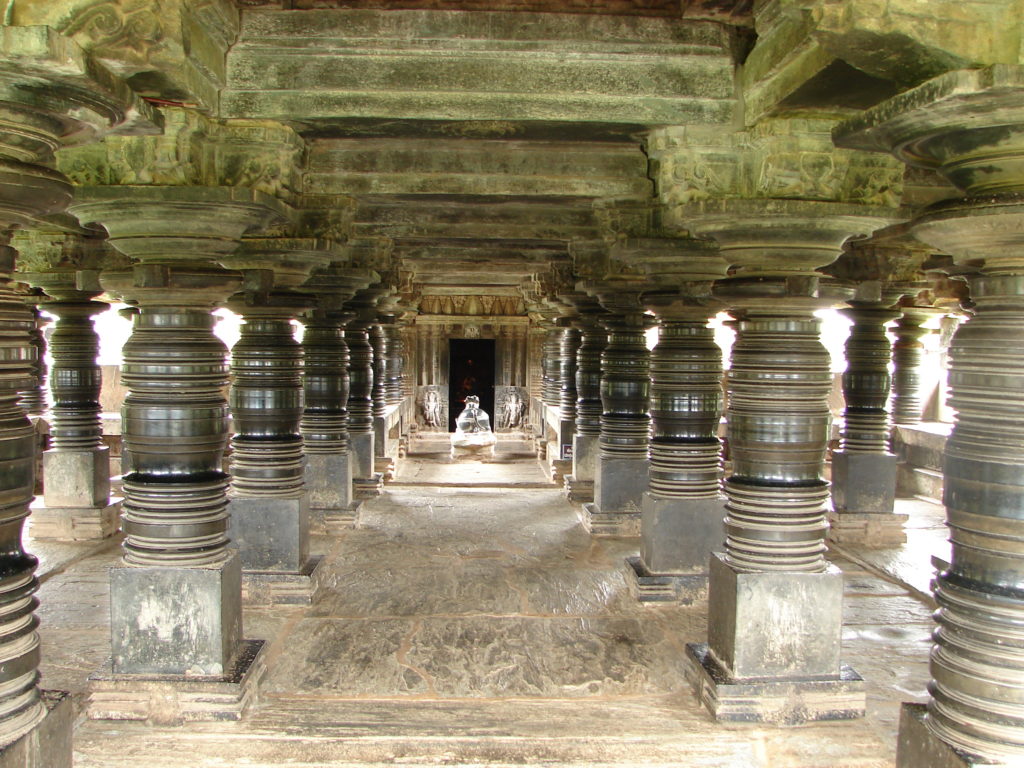
Halasuru Someshwara Temple is located in the neighborhood of Halasuru (also known as Ulsoor) in Bangalore, India. It is one of the old temples in the city dating back to the Chola period, it is dedicated to the Hindu god Shiva. Major additions or modifications were made during the late Vijayanagara Empire period under the rule of Hiriya Kempe Gowda
In the “Gazetter of Mysore” (1887), Benjamin Lewis Rice describes a legend behind the consecration of the temple. Kempe Gowda, while on a hunt, rode far away from his capital Yalahanka. Being tired, he rested under a tree and fell asleep. The local deity Someshwara appeared to him in a dream and instructed him to build a temple in his honor using buried treasure. In return the chieftain would receive divine favor. Kempe Gowda found the treasure and dutifully completed the temple.
According to another version of the legend, King Jayappa Gowda (1420-1450 CE) from a minor dynasty of the Yelahanka Nada Prabhus was hunting in a forest near the present Halasuru area, when he felt tired and relaxed under a tree. In a dream, a man appeared before him and told him that a linga (universal symbol of the god Shiva) was buried under the spot where he was sleeping. He was instructed to retrieve it and build a temple. Jayappa found the treasure and initially built the temple out of wood.
Another account attributes the temple to the Chola Dynasty with later renovations made by the Yelahanka Nada Prabhus
AIRAVATHESHVARA TEMPLE
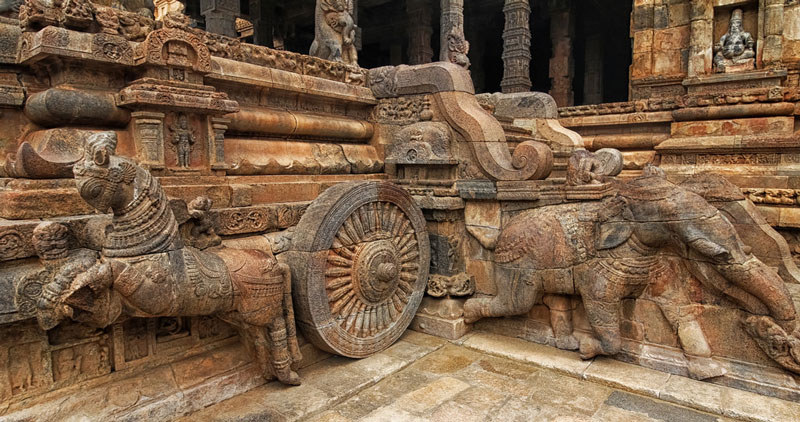
Airavatesvara Temple is a Hindu temple of Dravidian architecture located in the town of Darasuram, near Kumbakonam, Thanjavur District in the South Indian state of Tamil Nadu. This temple, built by Rajaraja Chola II in the 12th century CE is a UNESCO World Heritage Site, along with the Brihadeeswara Temple at Thanjavur, the Gangaikondacholisvaram Temple at Gangaikonda Cholapuram that are referred to as the Great Living Chola Temples.
The Airavatesvarar temple is one among a cluster of eighteen medieval era large Hindu temples in the Kumbakonam area, Thanjavur District. The temple is dedicated to Shiva. It also reverentially displays Vaishnavism and Shaktism traditions of Hinduism, along with the legends associated with Nayanmars – the Bhakti movement saints of Shaivism.
The stone temple incorporates a chariot structure, and includes major Vedic and Puranic deities such as Indra, Agni, Varuna, Vayu, Brahma, Surya, Vishnu, Saptamtrikas, Durga, Saraswati, Sri devi (Lakshmi), Ganga, Yamuna, Subrahmanya, Ganesha, Kama, Rati and others. Shiva’s consort has a dedicated shrine called the Periya Nayaki Amman temple. This is a detached temple situated to the north of the Airavateshvarar temple. This might have been a part of the main temple when the outer courts were complete. At present, parts of the temple such as the gopuram is in ruins, and the main temple and associated shrines stand alone. It has two sun dials namely morning and evening sun dials which can be seen as wheels of the chariot. The temple continues to attract large gatherings of Hindu pilgrims every year during Magha, while some of the images such as those of Durga and Shiva are part of special pujas
SWAMINARAYAN AKSHARDHAM TEMPLE
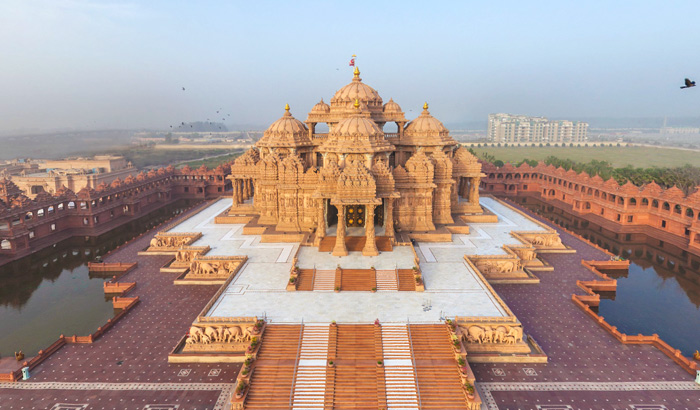
Holding the Guinness World Records as the world’s largest comprehensive Hindu temple, the Akshardham temple complex is a stunning piece of architecture. Sprawled over a vast area, the complex looks like a splendid heavenly city when viewed from above. The temple itself has been constructed in pink sandstone and marble and is laid amidst neatly manicured lawns, pristine waterfronts and open courtyards. It has been designed in the traditional Hindu style of architecture and follows vaastu shastra and pancharatra shastra. As you stroll along the breathtaking complex, you will spot intricate carvings of animals, flowers, dancers, musicians and deities that adorn the walls. It is said that the stone used in the construction of the temple was brought from Rajasthan and weighed about 6,000 tonne. The Italian Carrara marble used in the structure adds to the beauty of the grand temple.
Some interesting features of the temple are a musical fountain, the Sahaj Anand Water Show at Yagnapurush Kund and the breathtaking Light and Sound Show. Starting at 7:30 pm, the show narrates stories from ancient Hindu scriptures. It is a spectacular rendition that uses colourful lasers, underwater flames, water jets and video projections.
The temple stands at a height of 140 ft and has a width of about 300 ft. It hosts 234 beautifully carved pillars, along with nine elaborately inscribed domes. The temple premises hold around 20,000 idols of Hindu deities, and the main shrine is that of Lord Swaminarayan. An 11-foot-tall idol of the god stands below the central dome. Interestingly, each statue at Akshardham is built with five metals called panch dhaatu. It also contains 148 statues of elephants that weigh over 3,000 tonne.
The temple can be accessed via 10 gates that symbolise 10 directions. The main gate is Bhakti Dwar or the gate of devotion. Akshardham was inaugurated on November 6, 2005. More than 8,000 volunteers across the world joined hands in building the temple.


